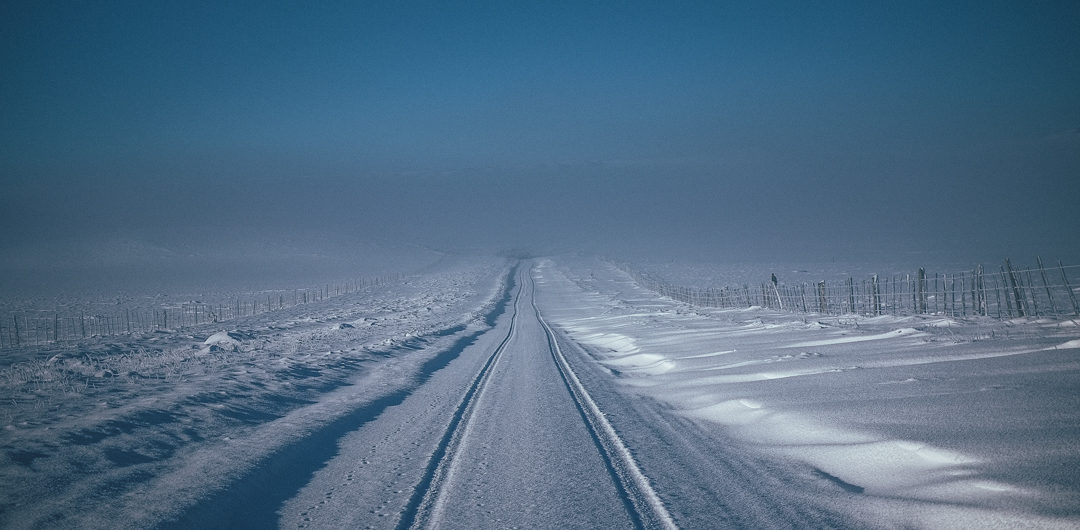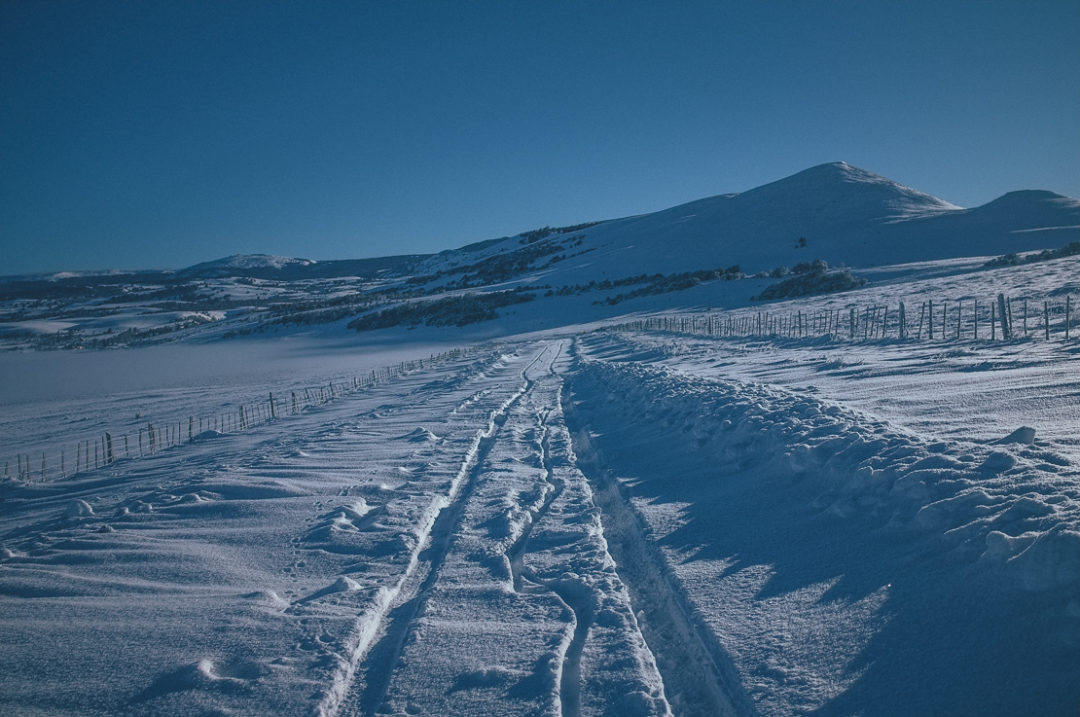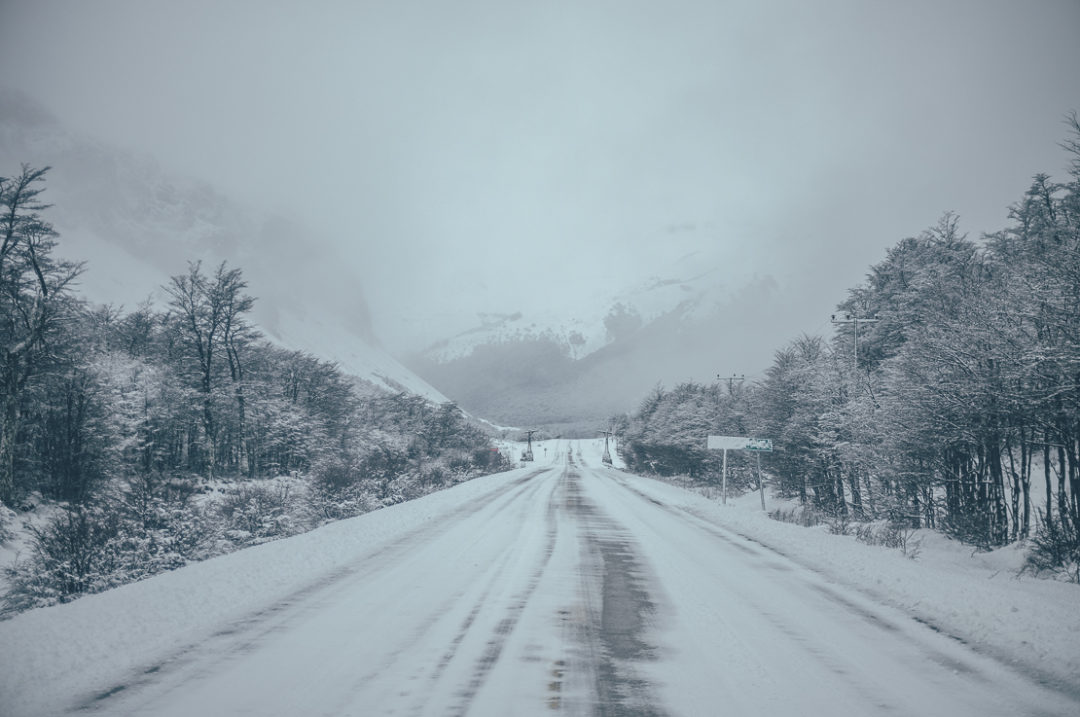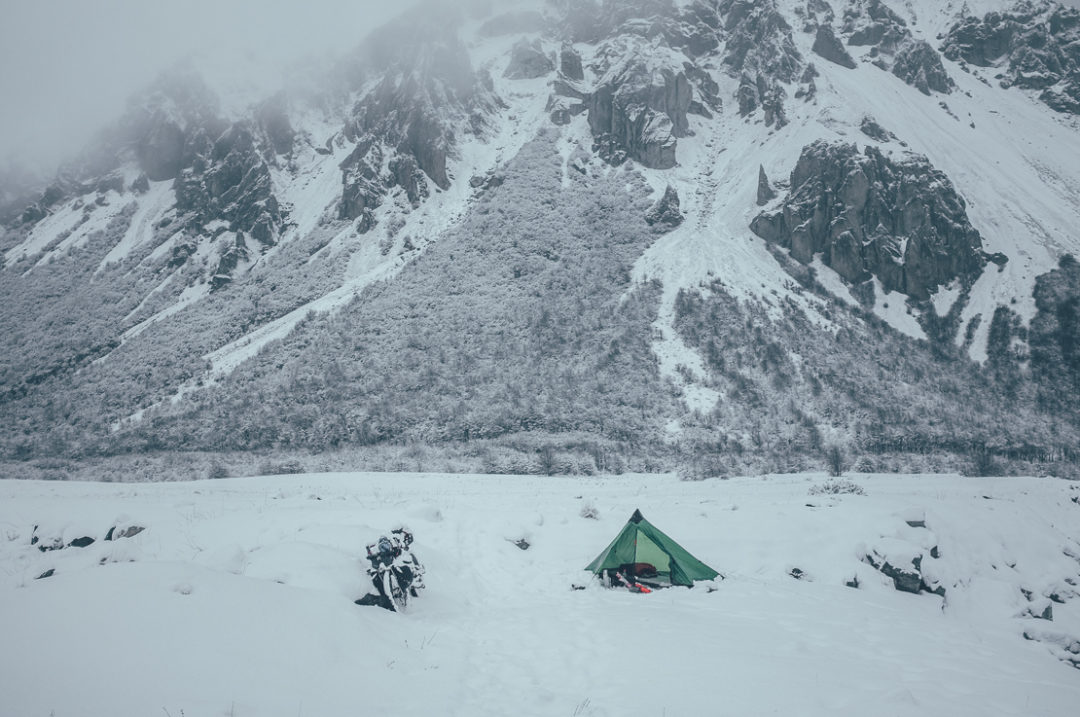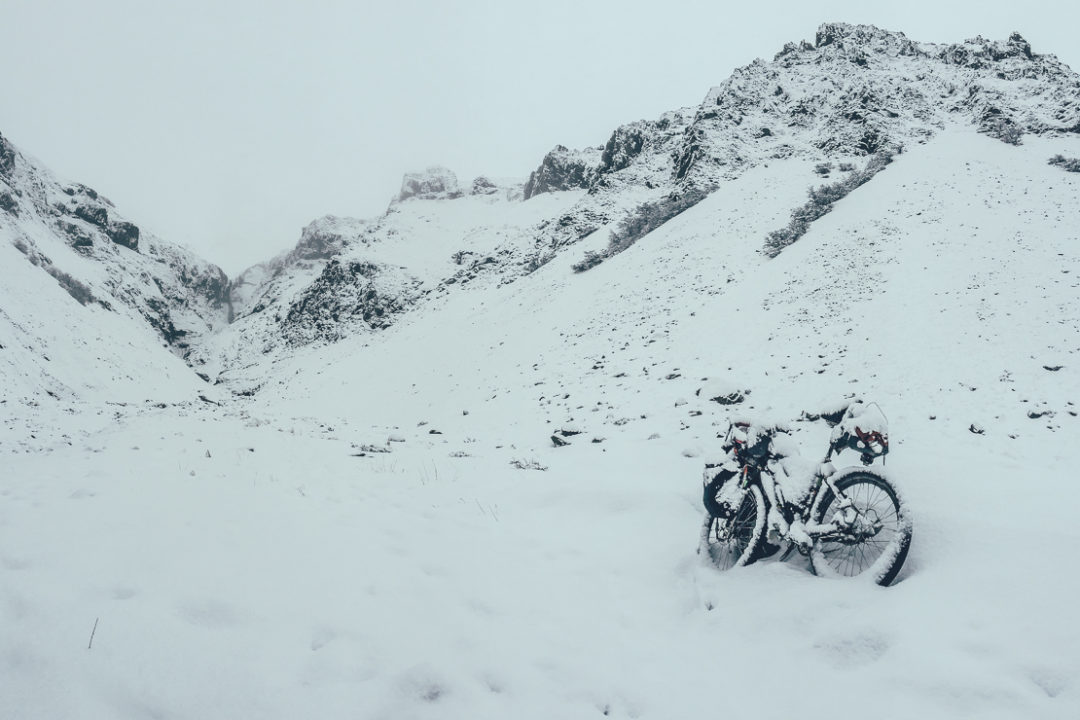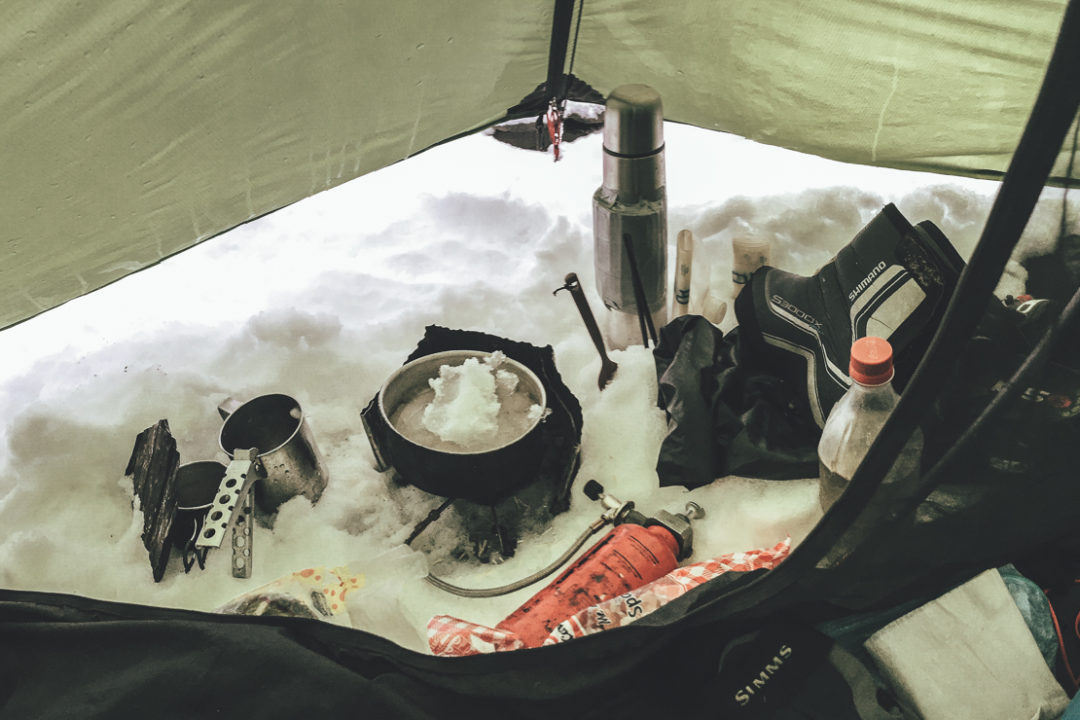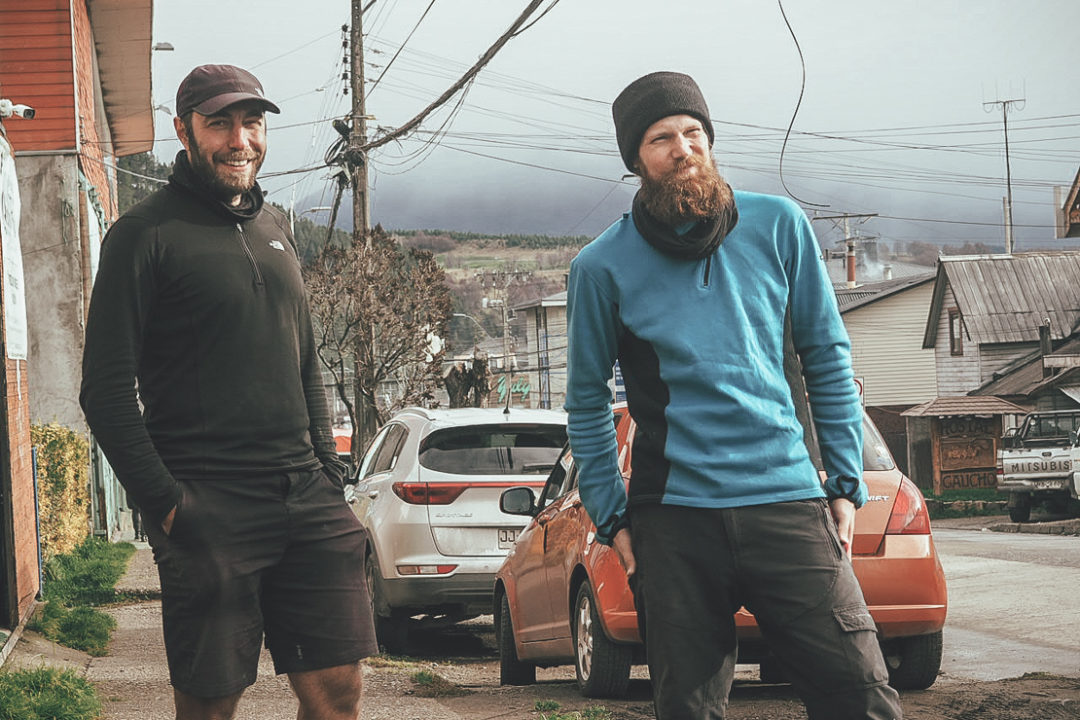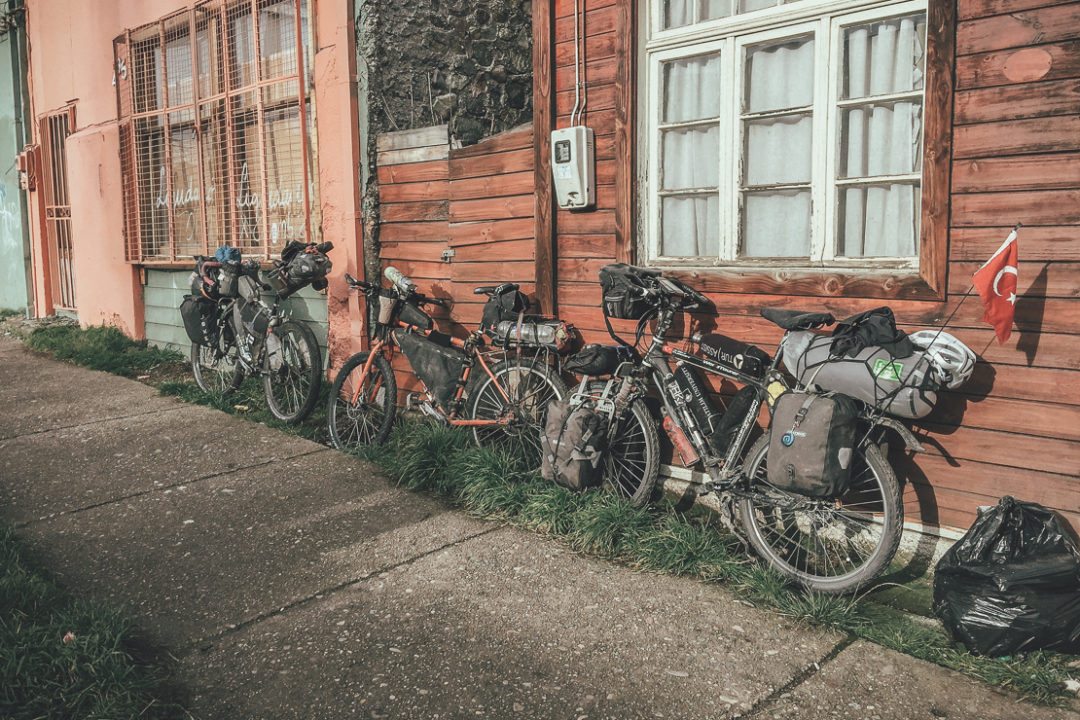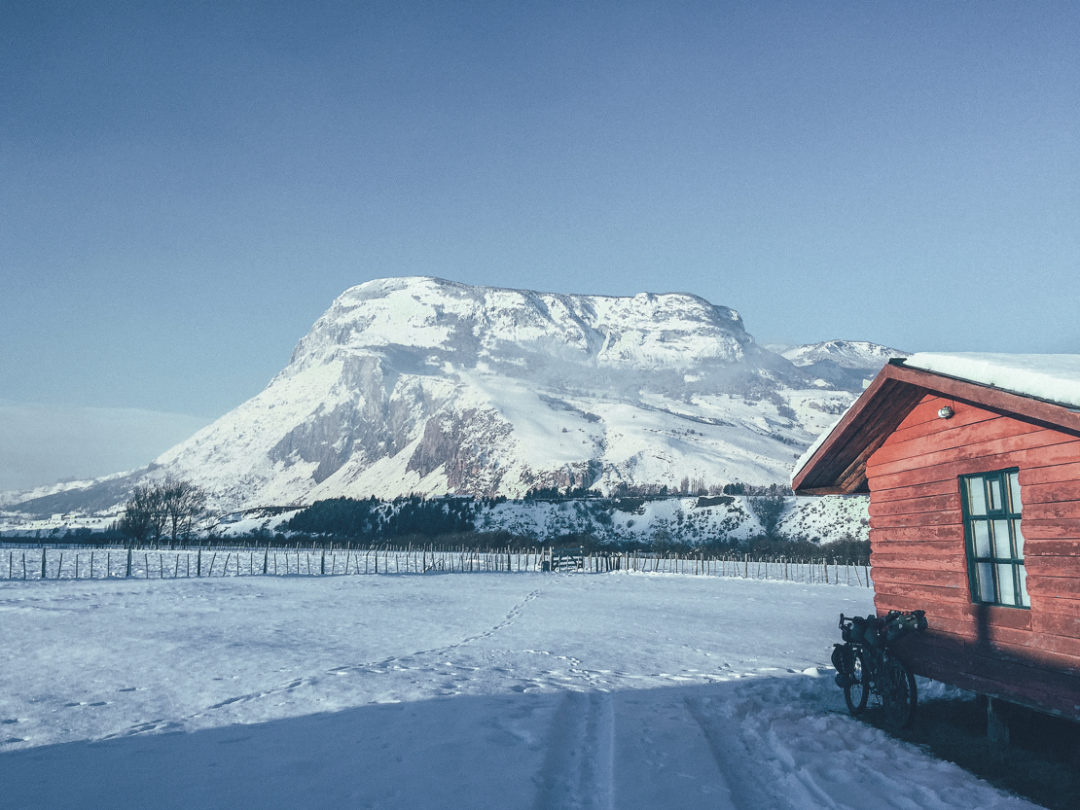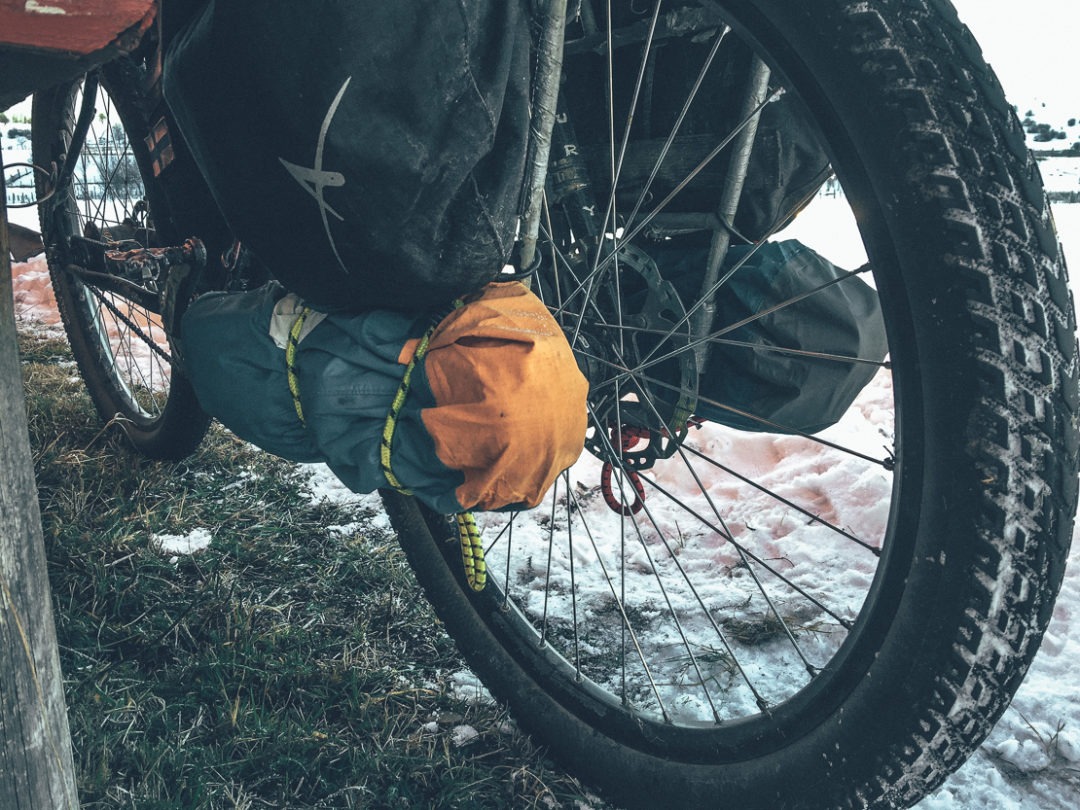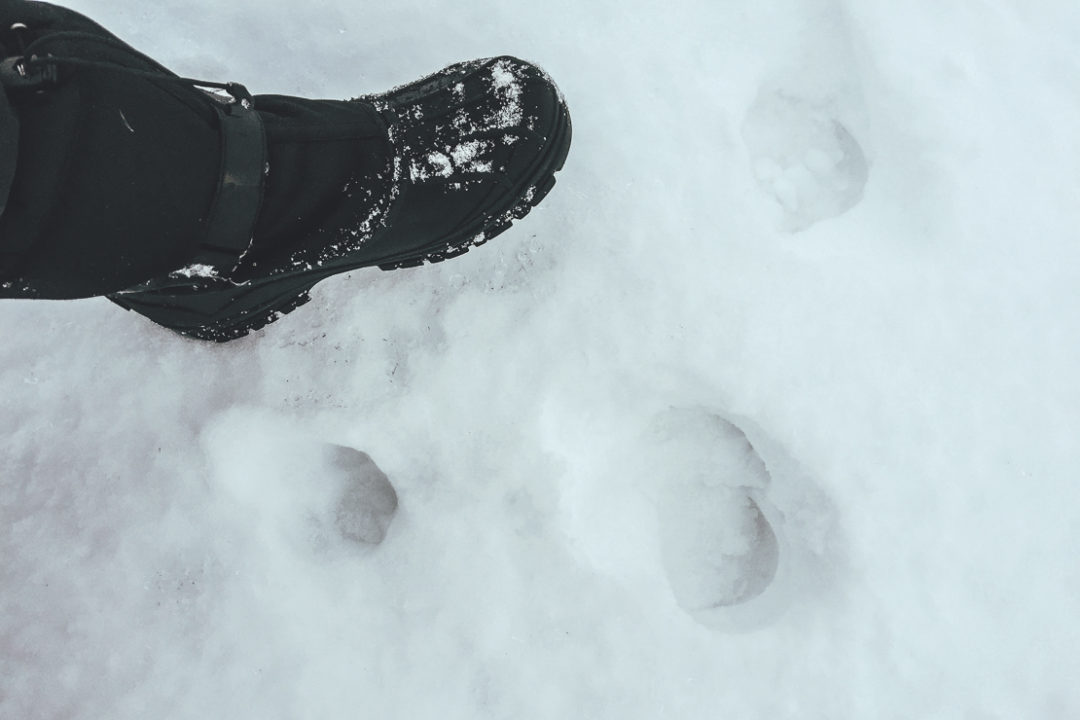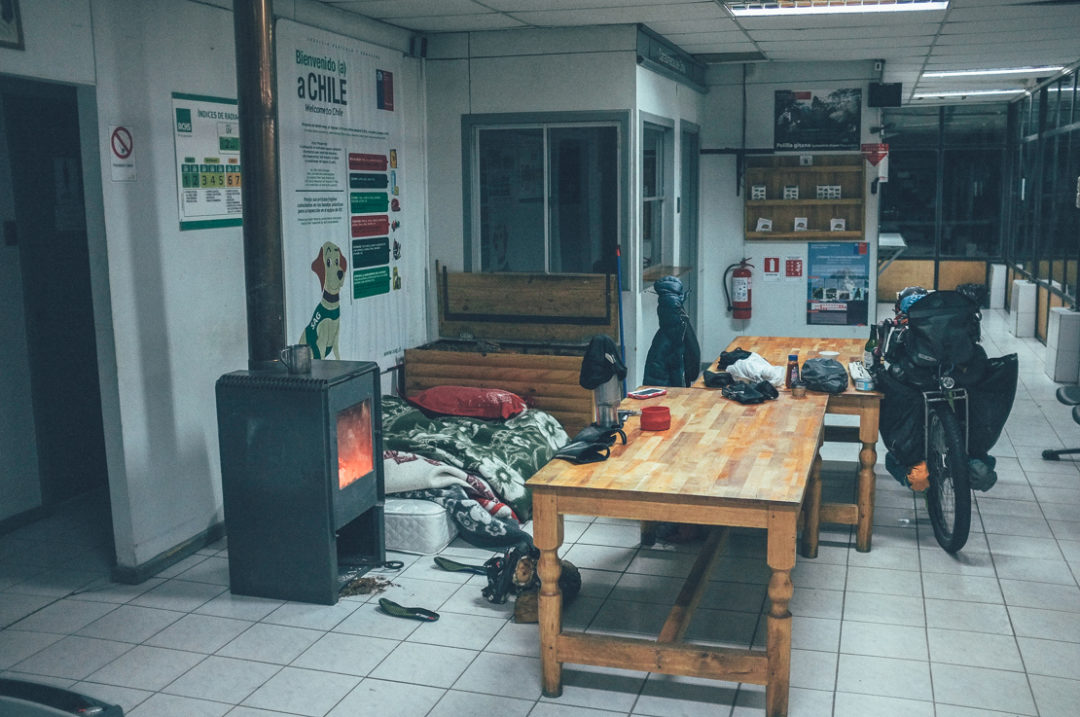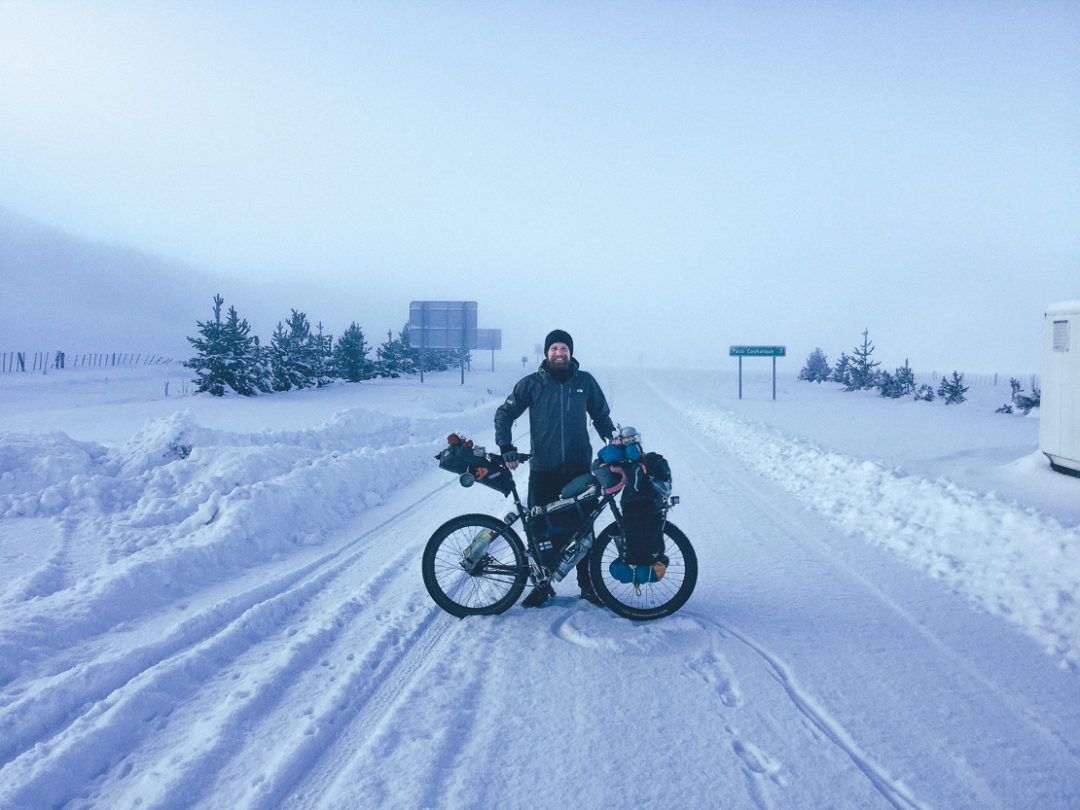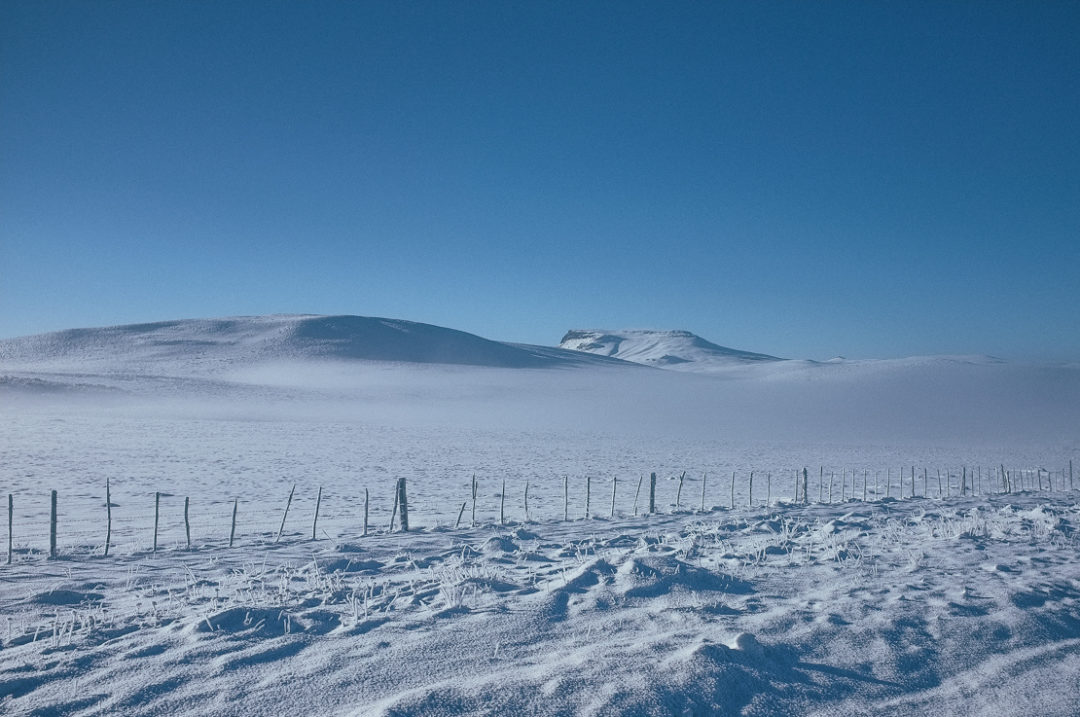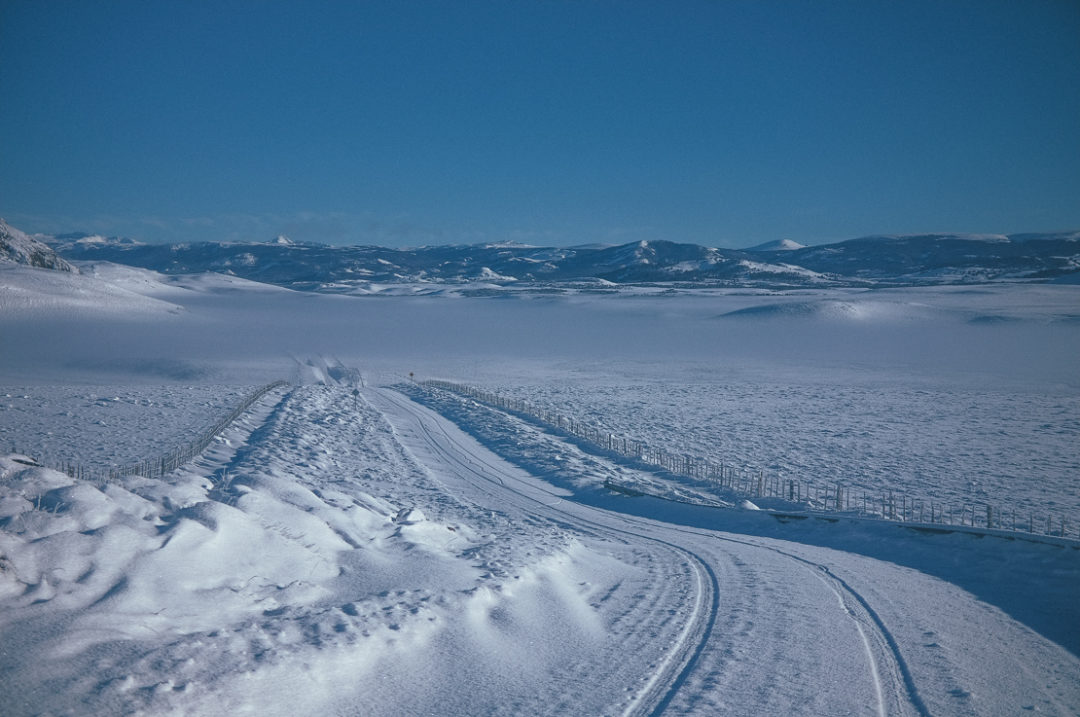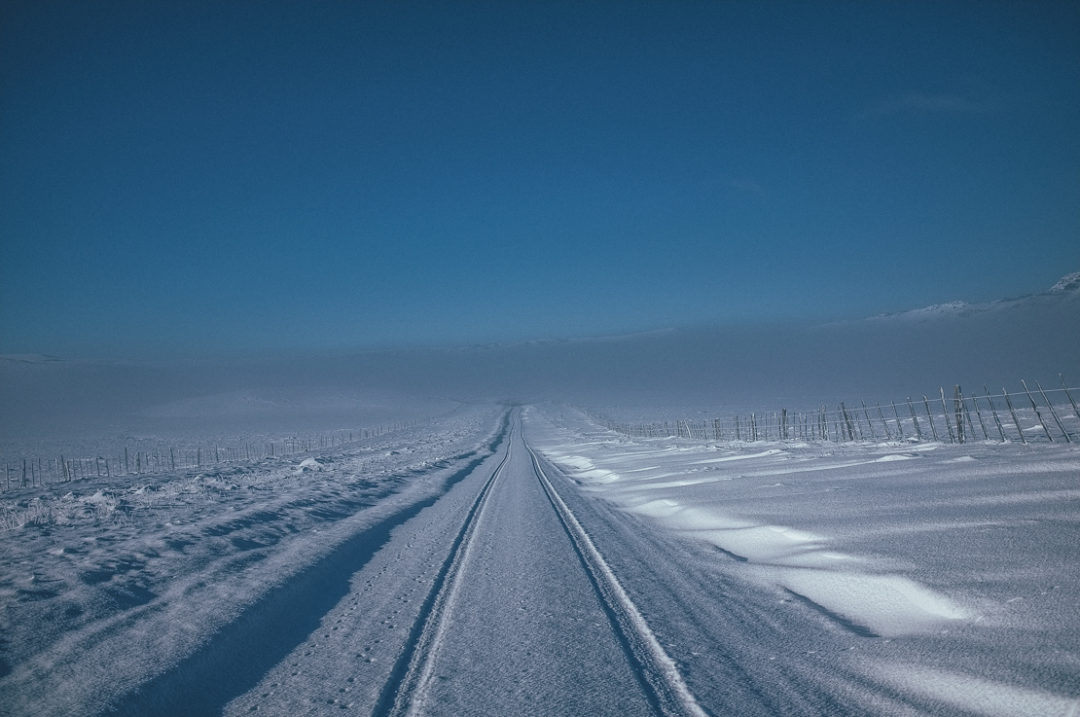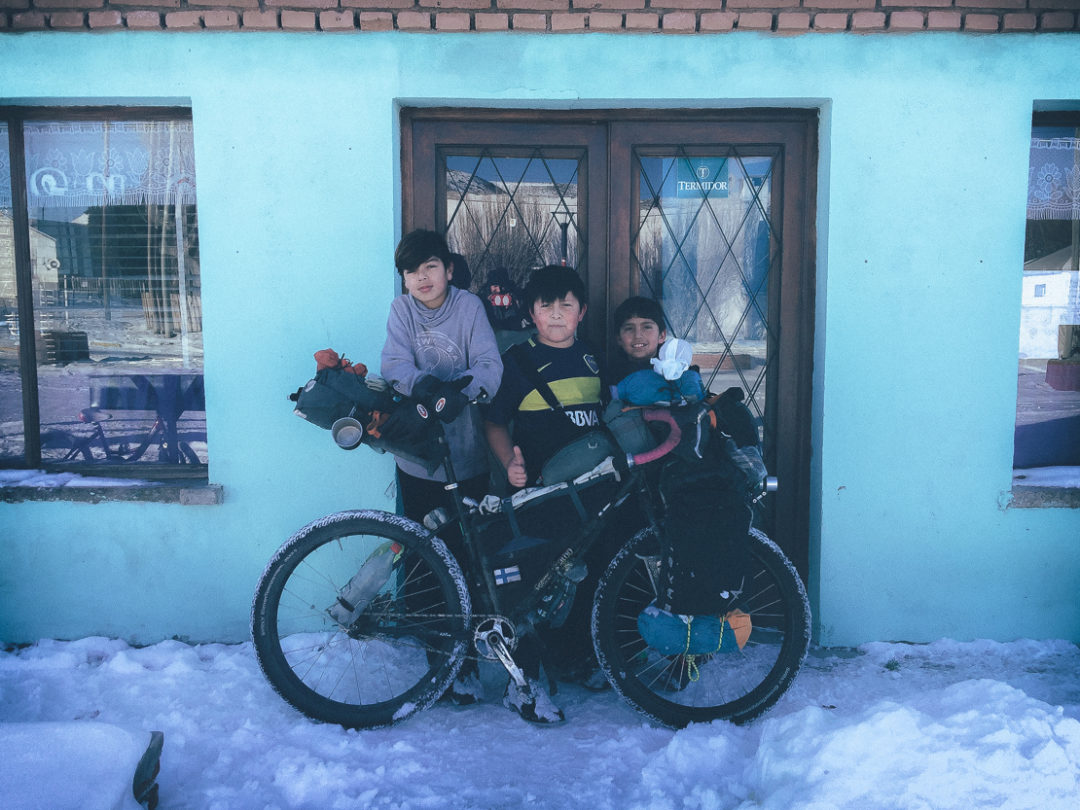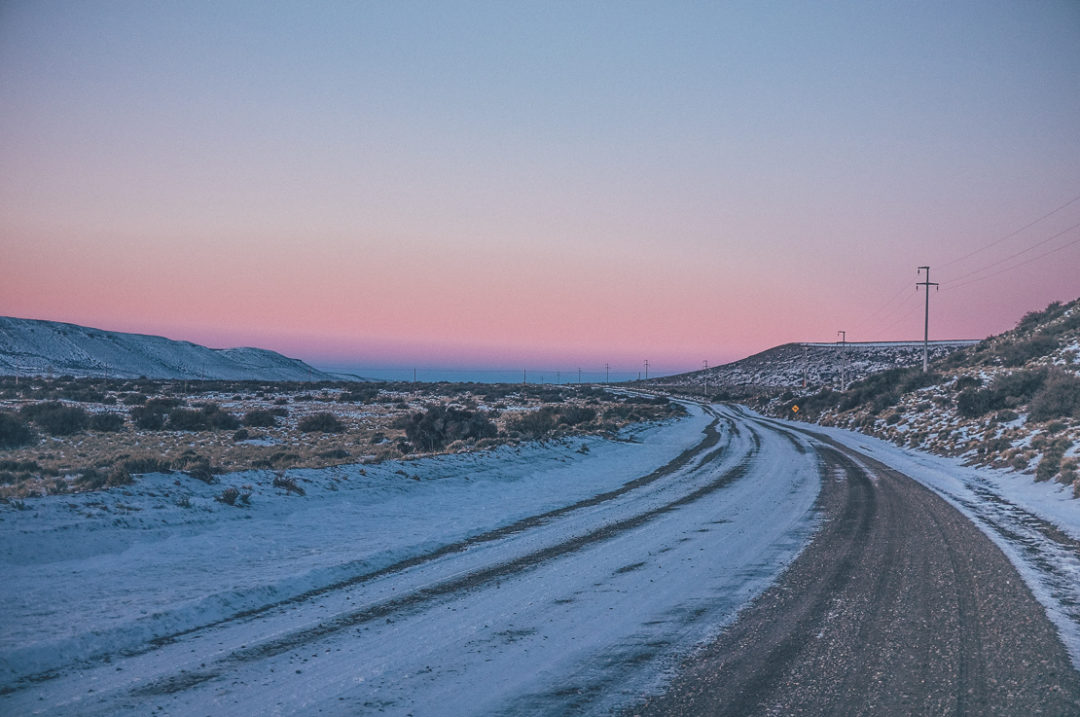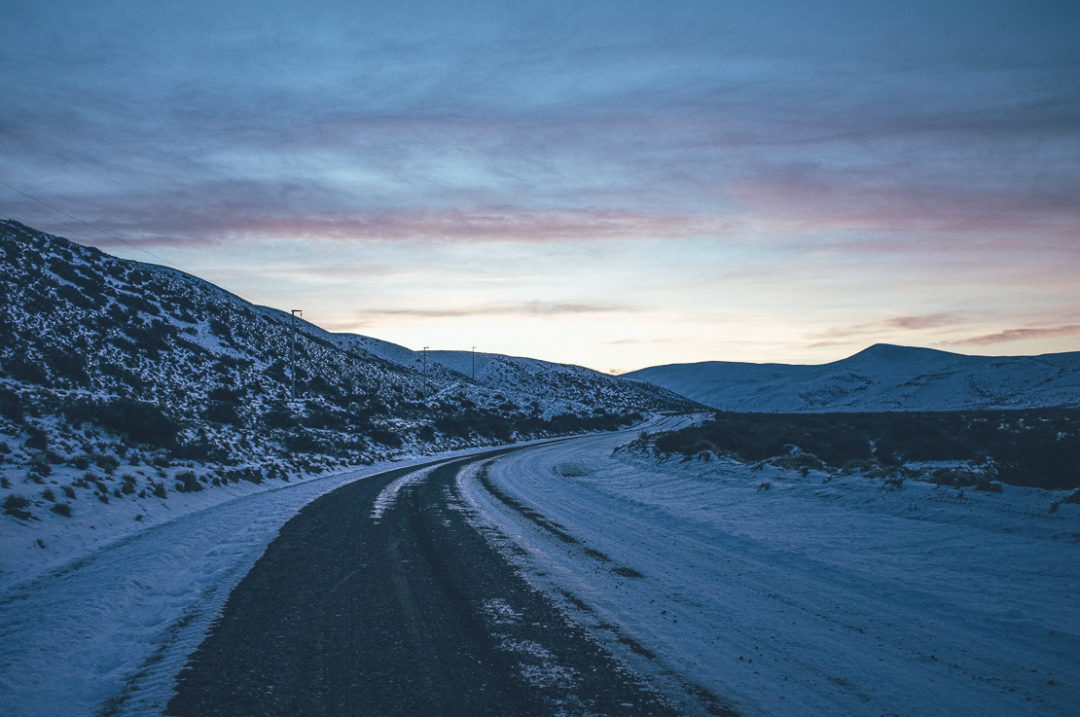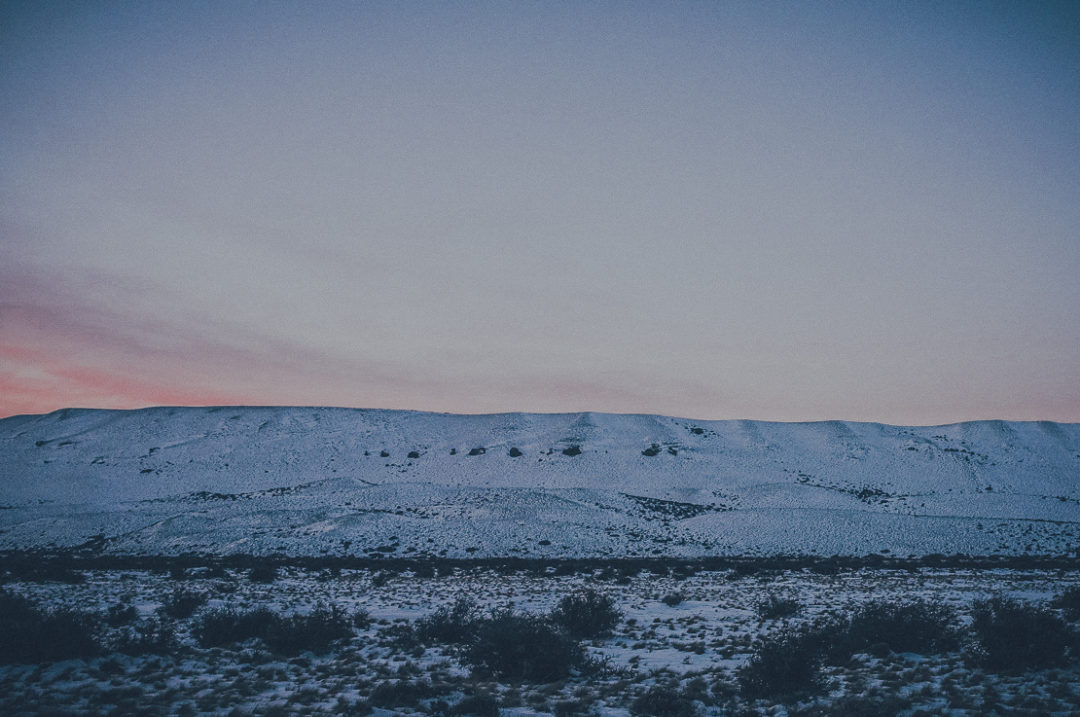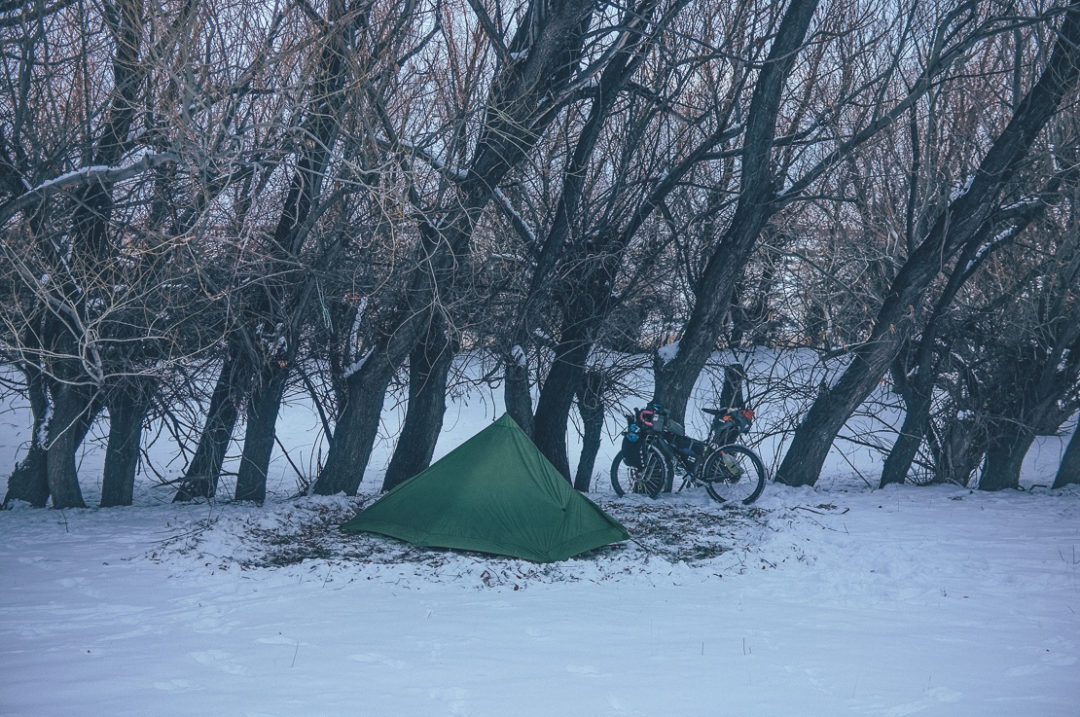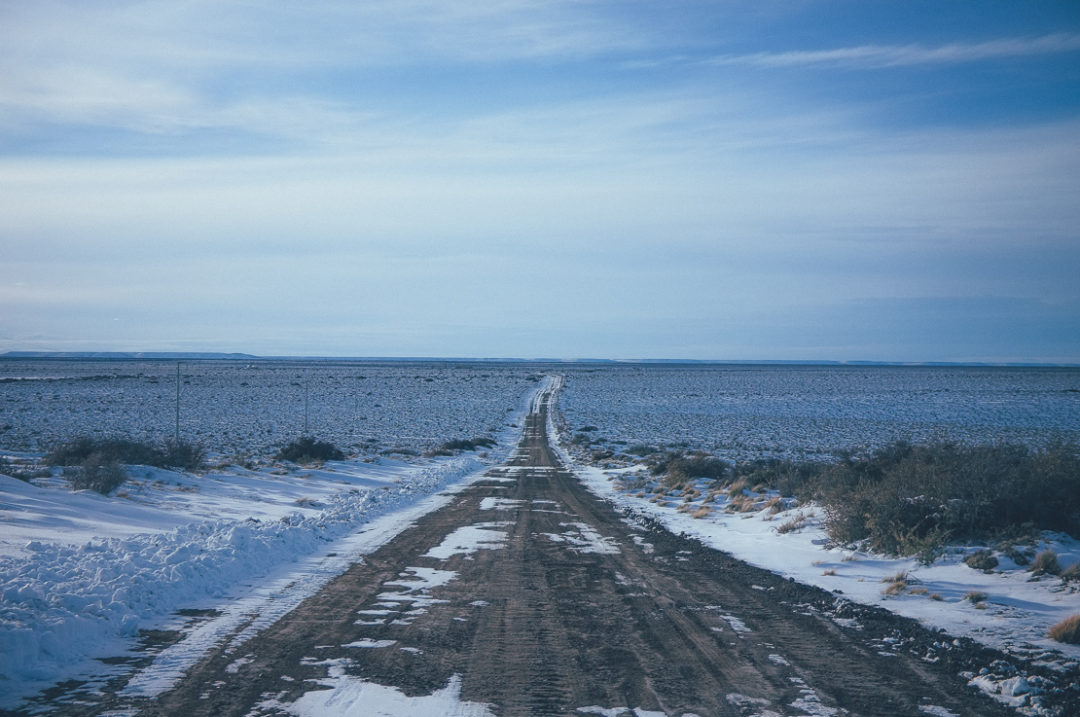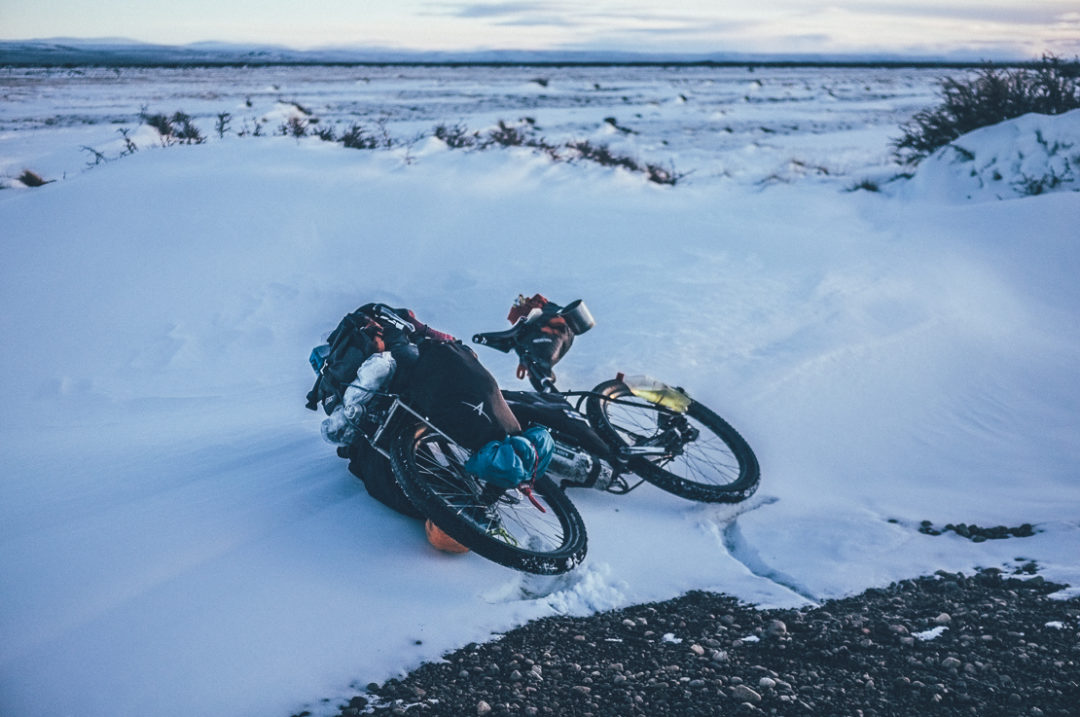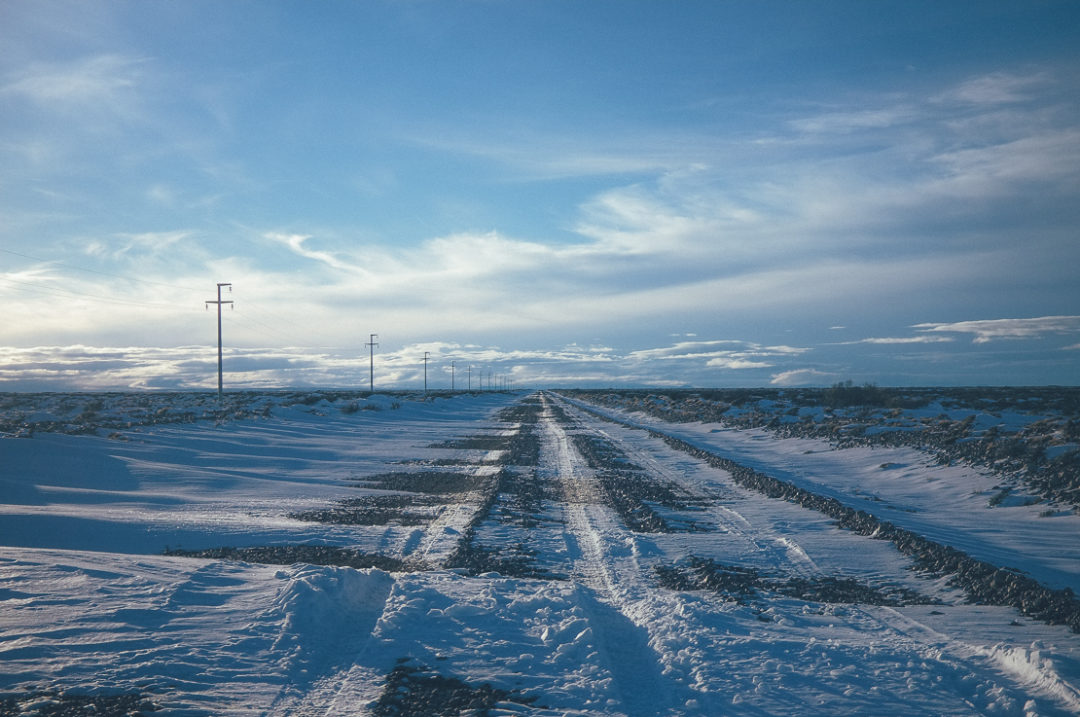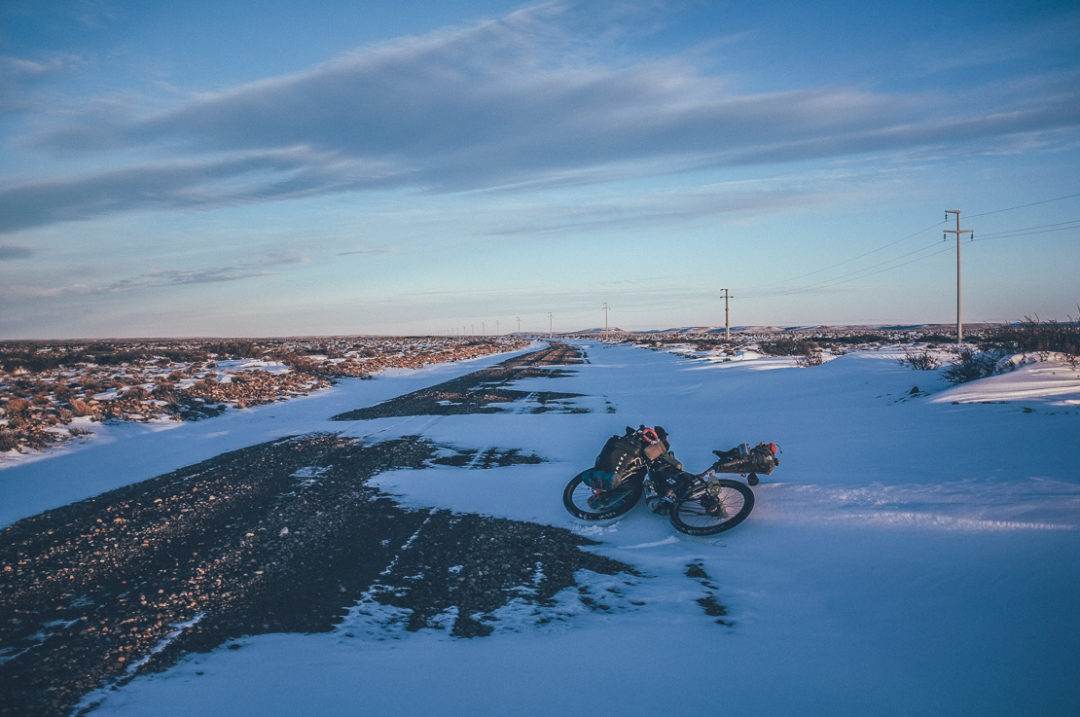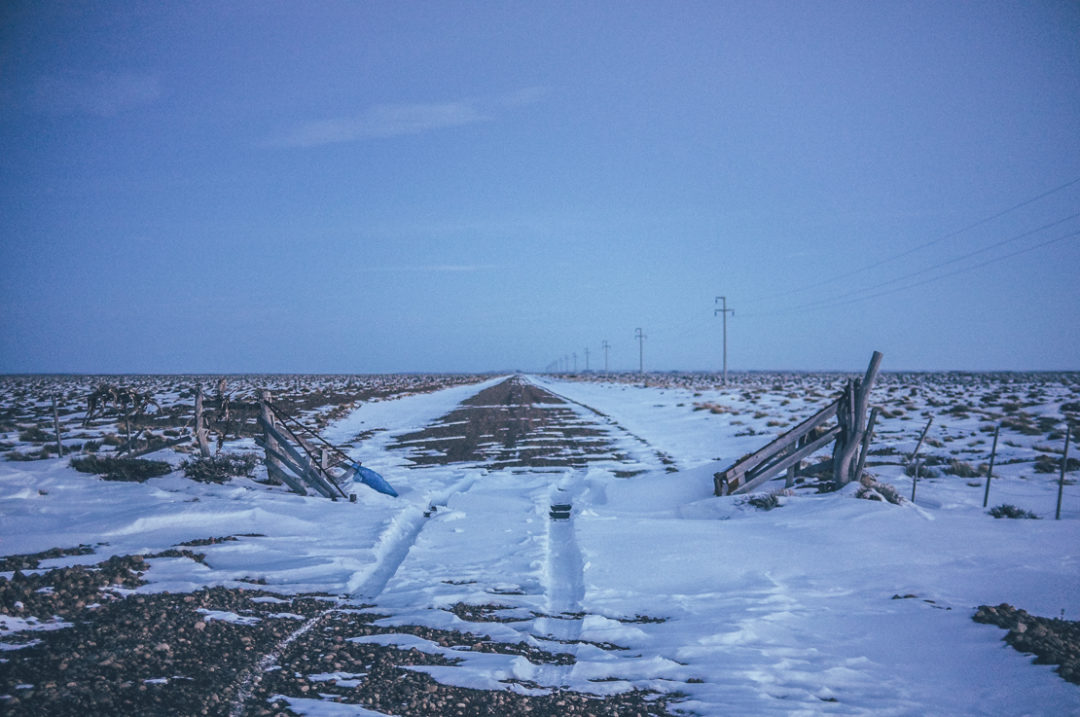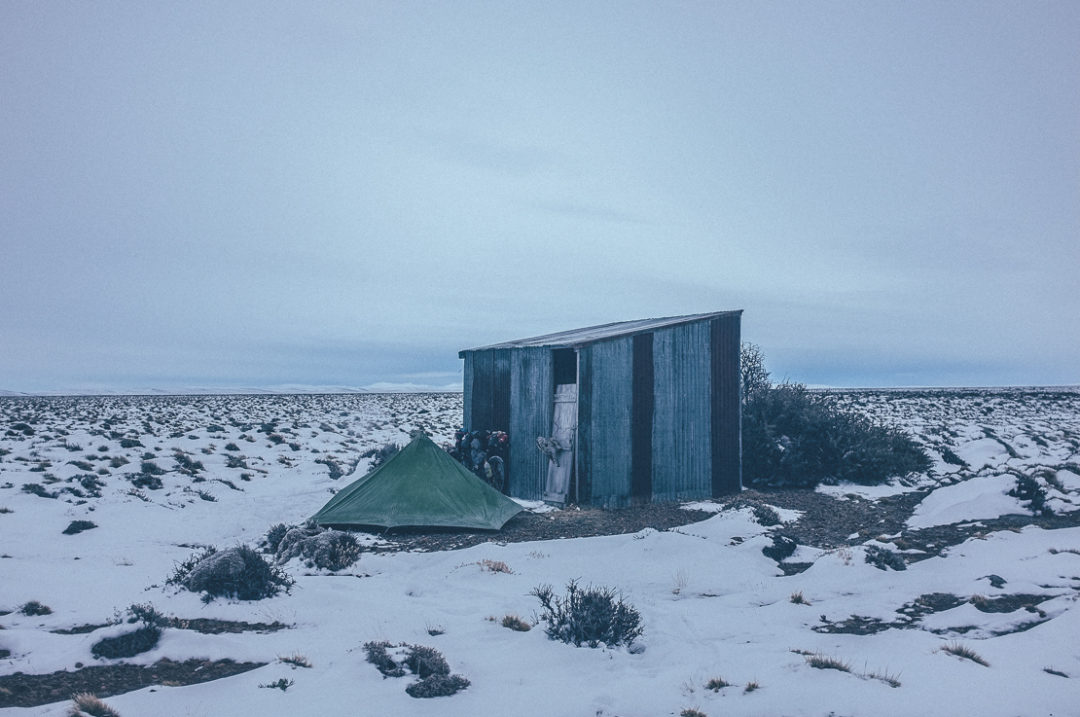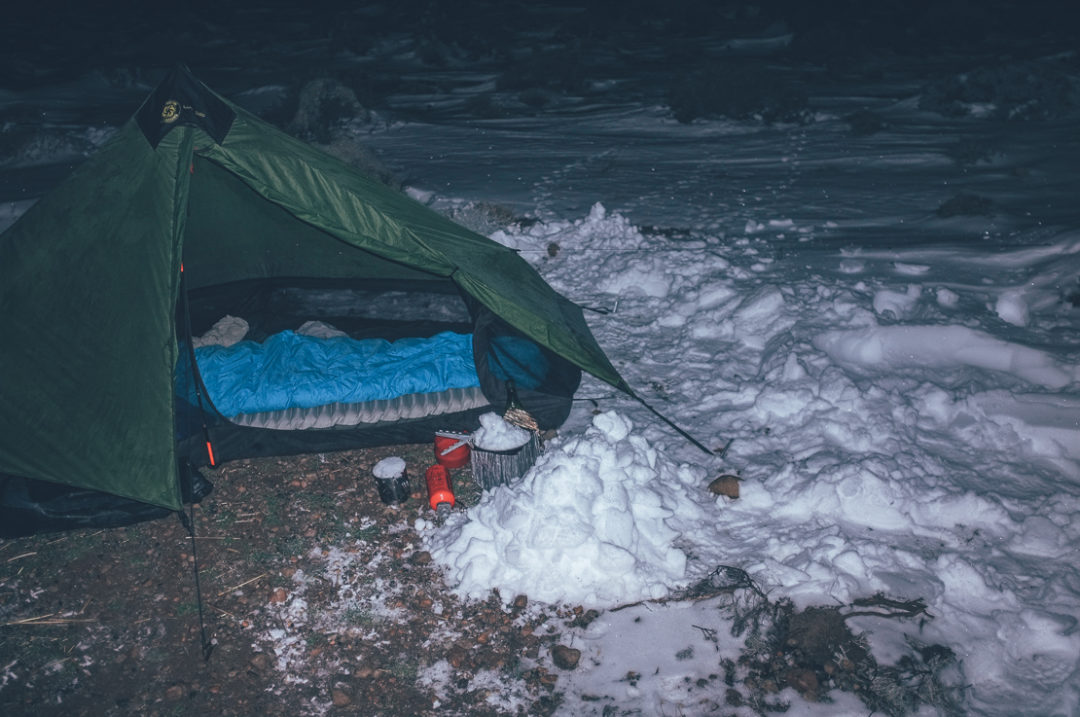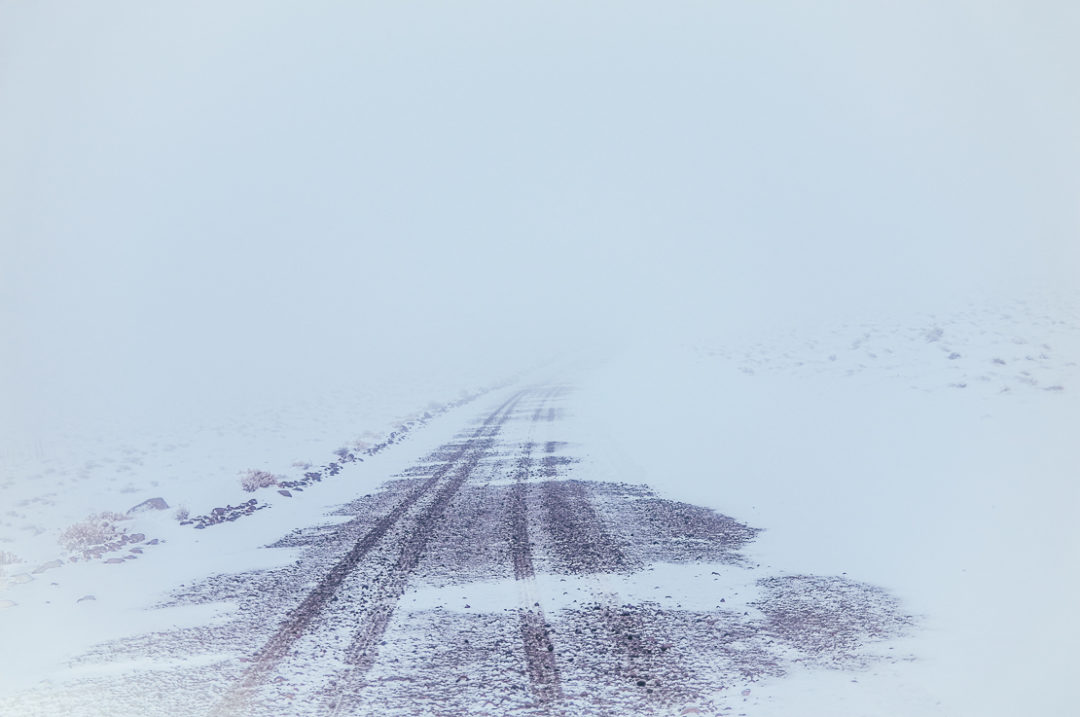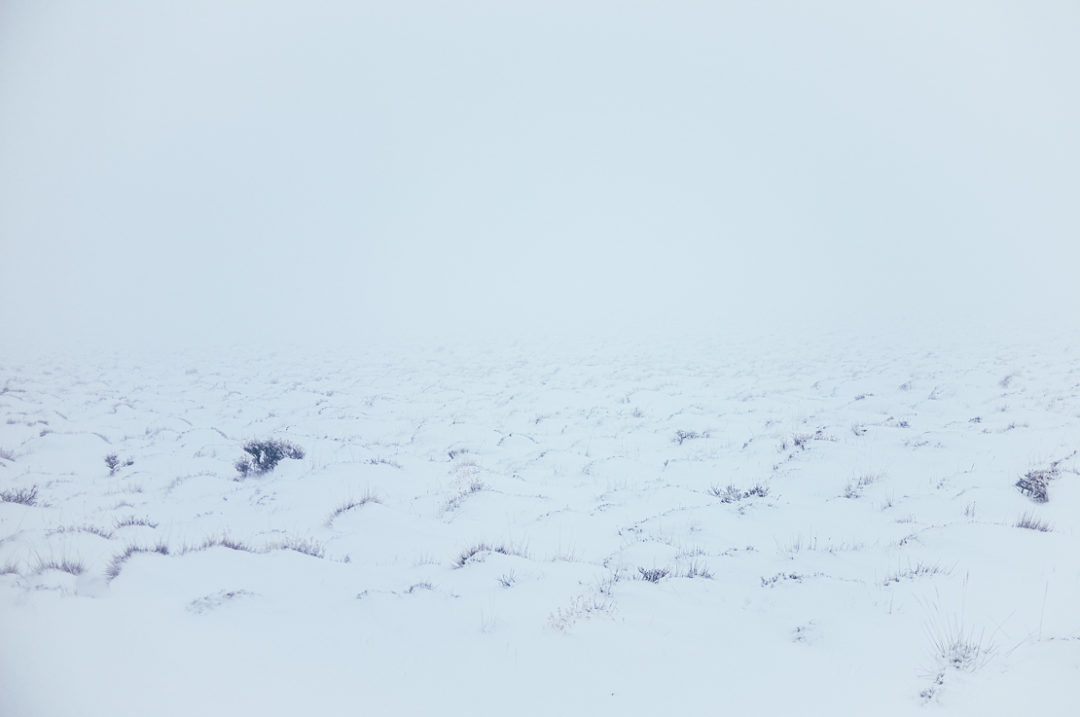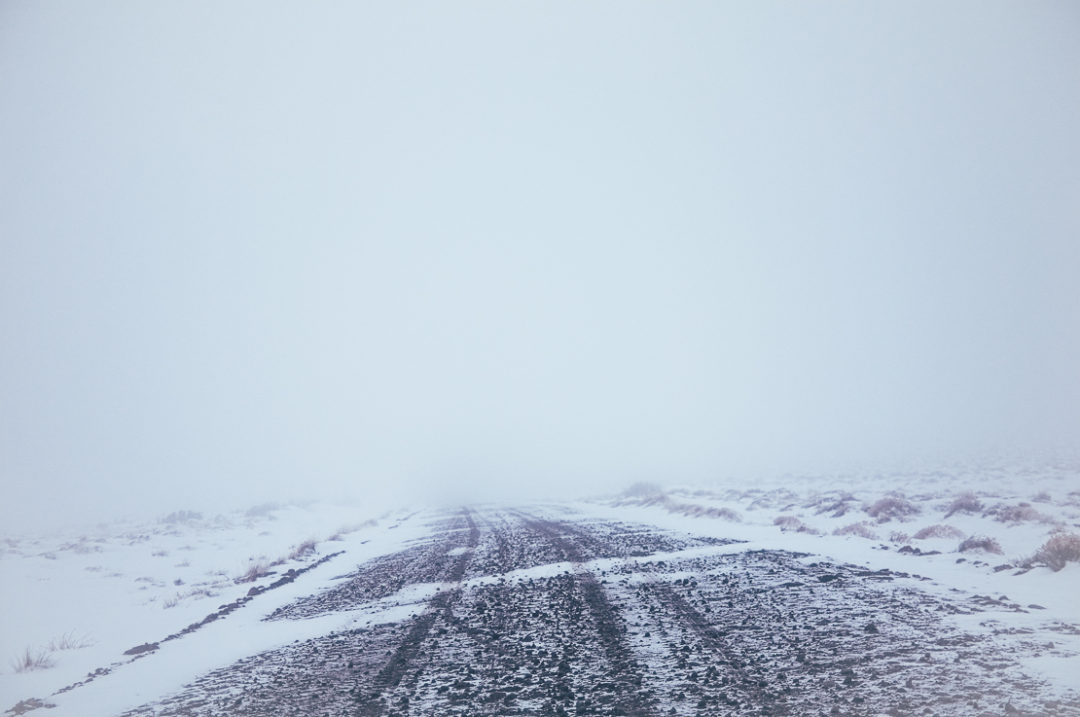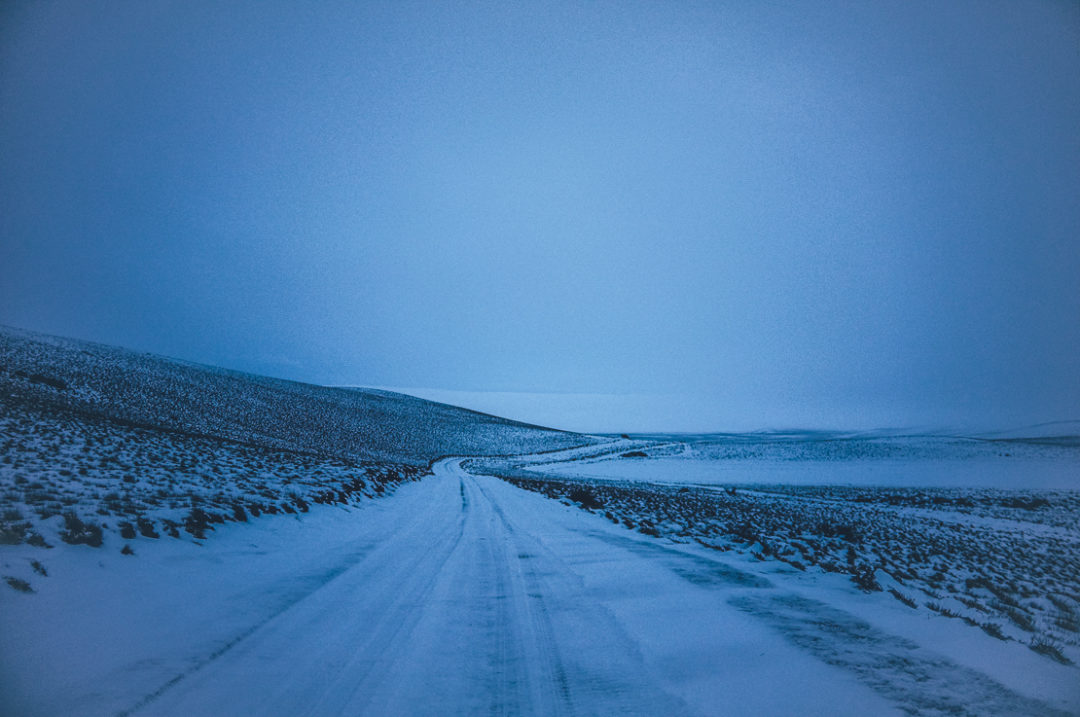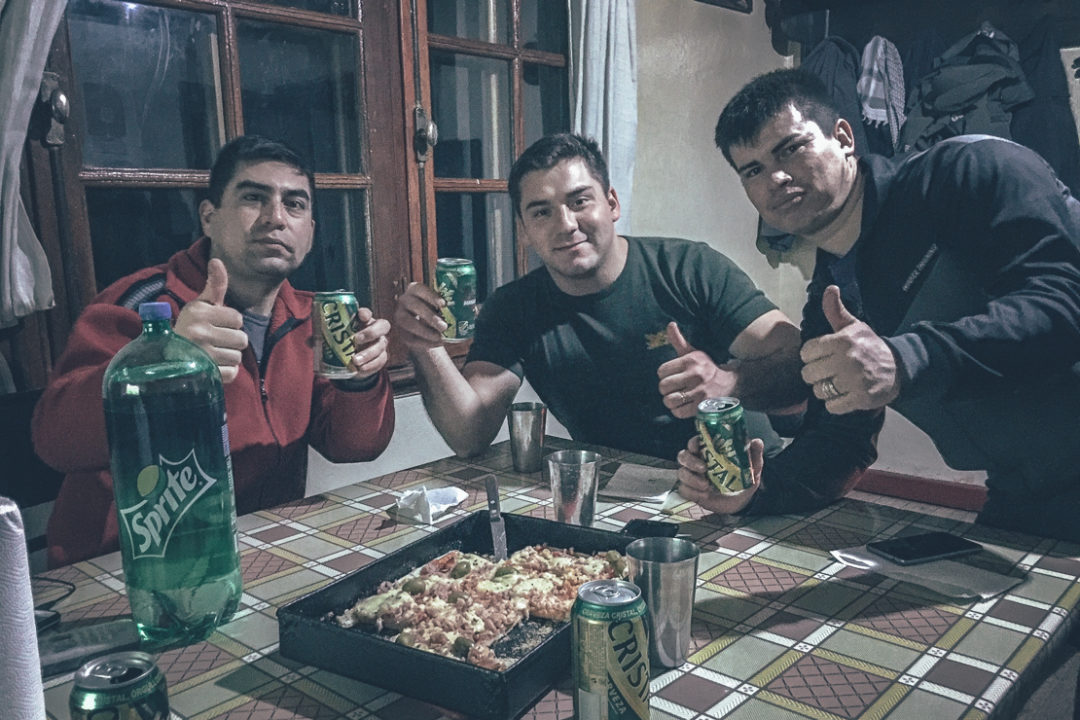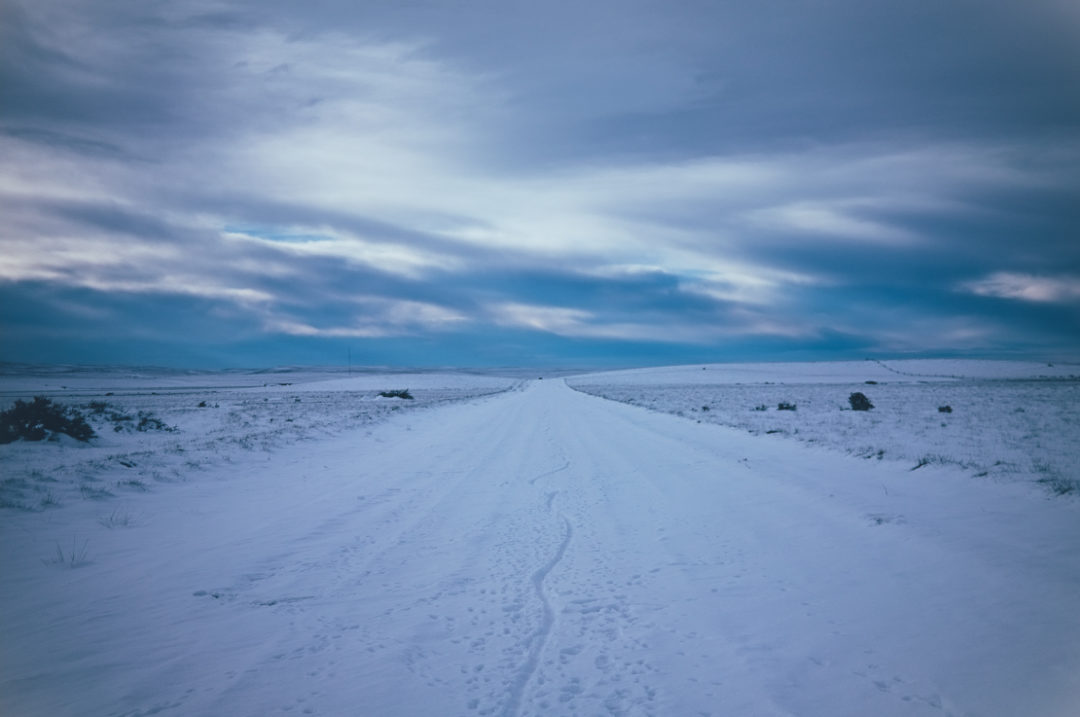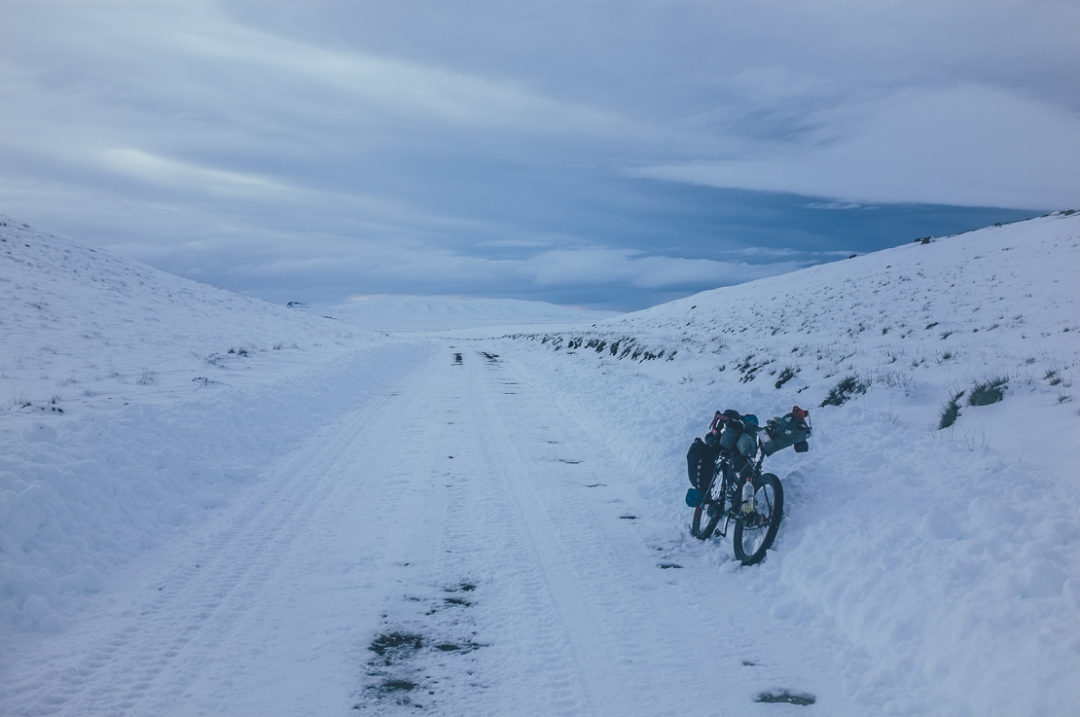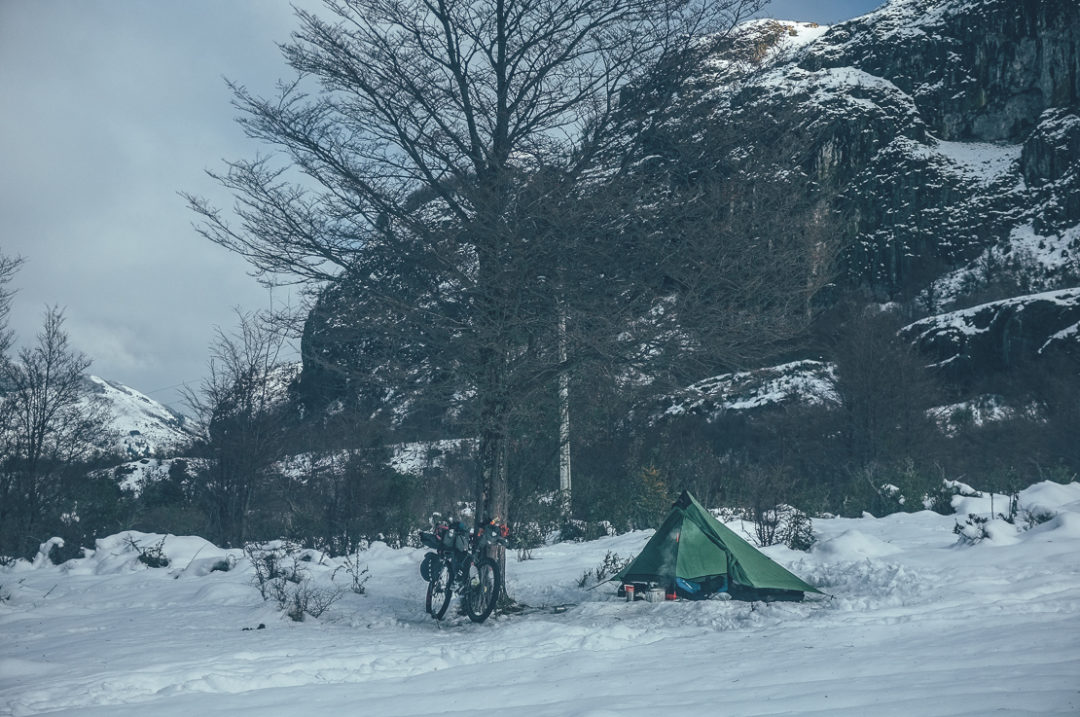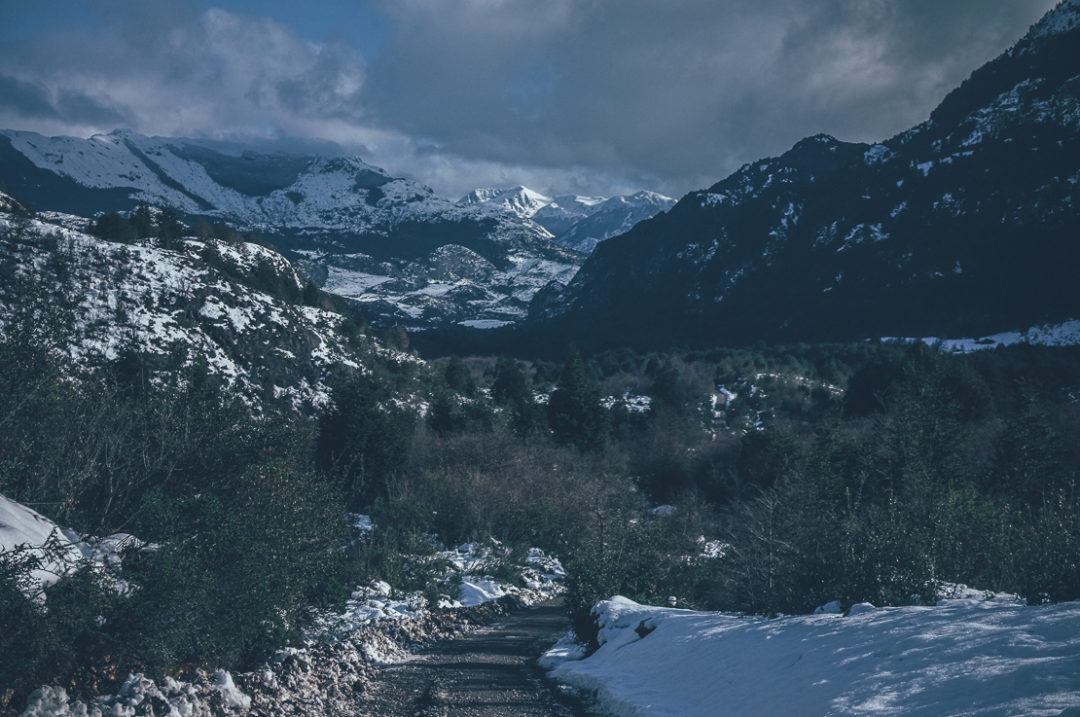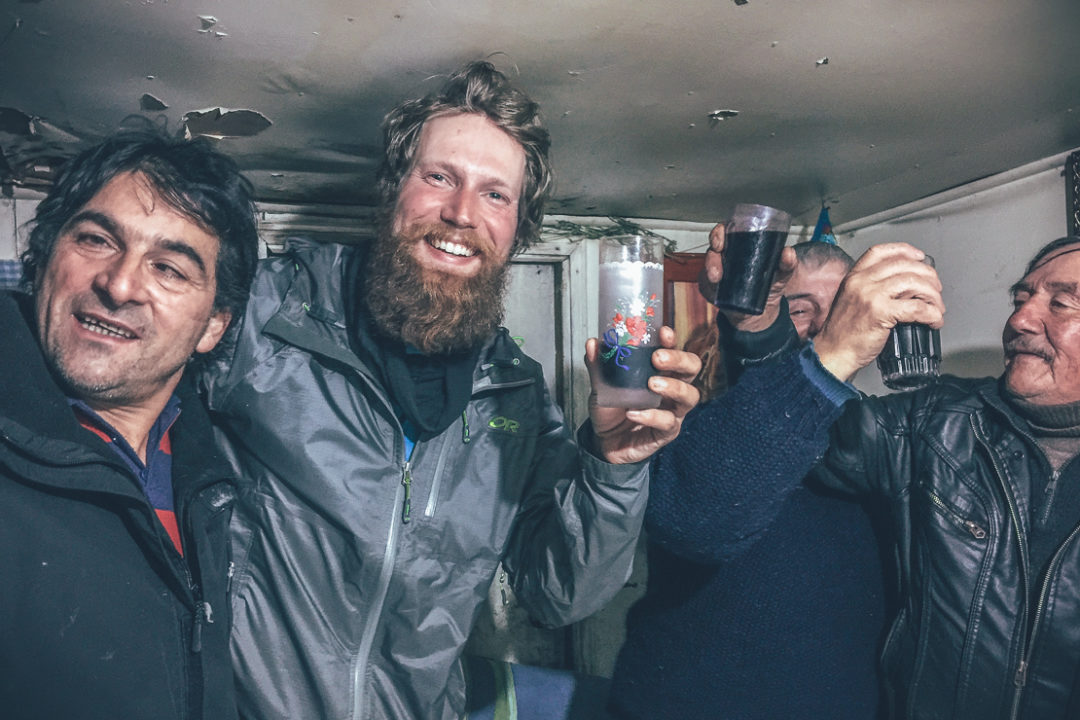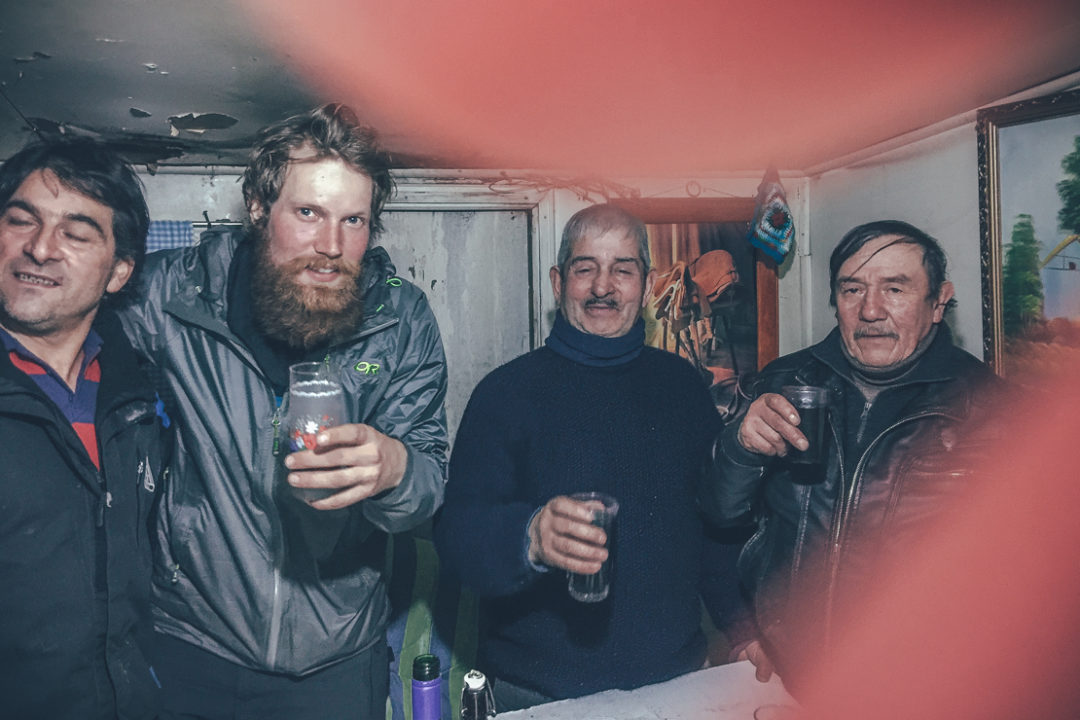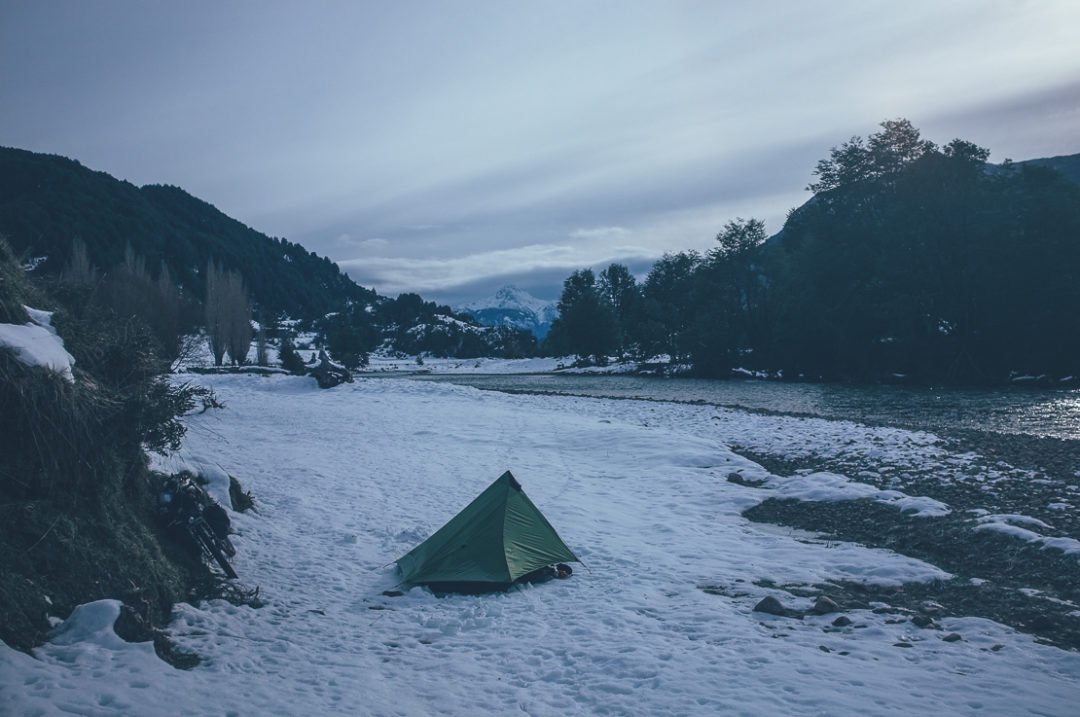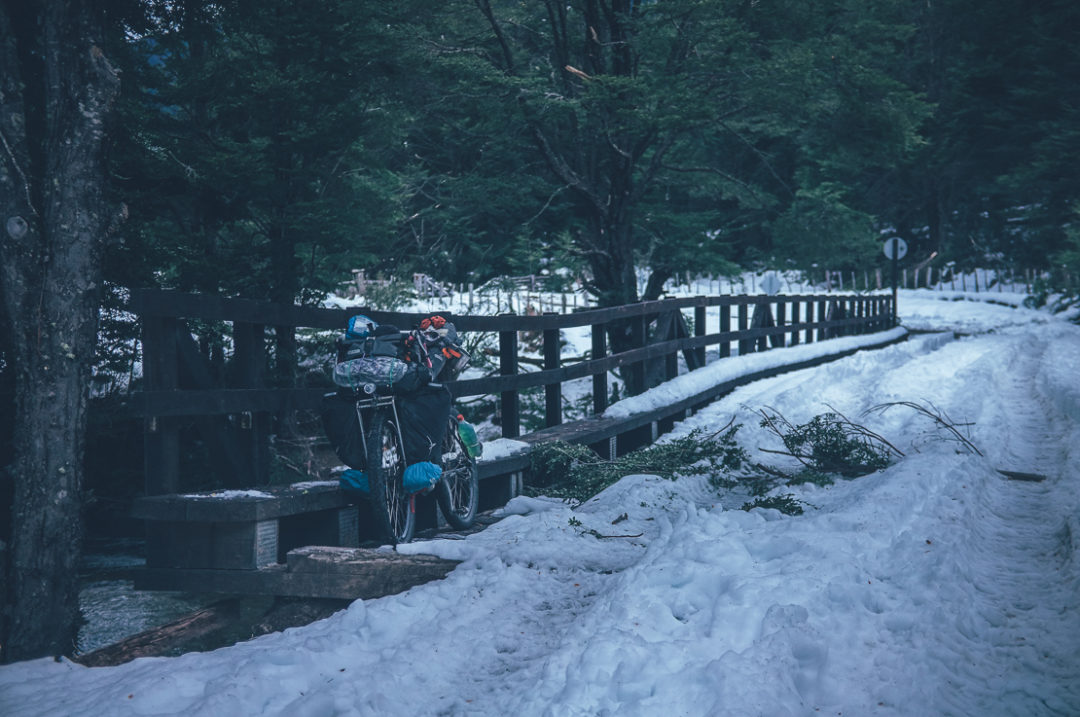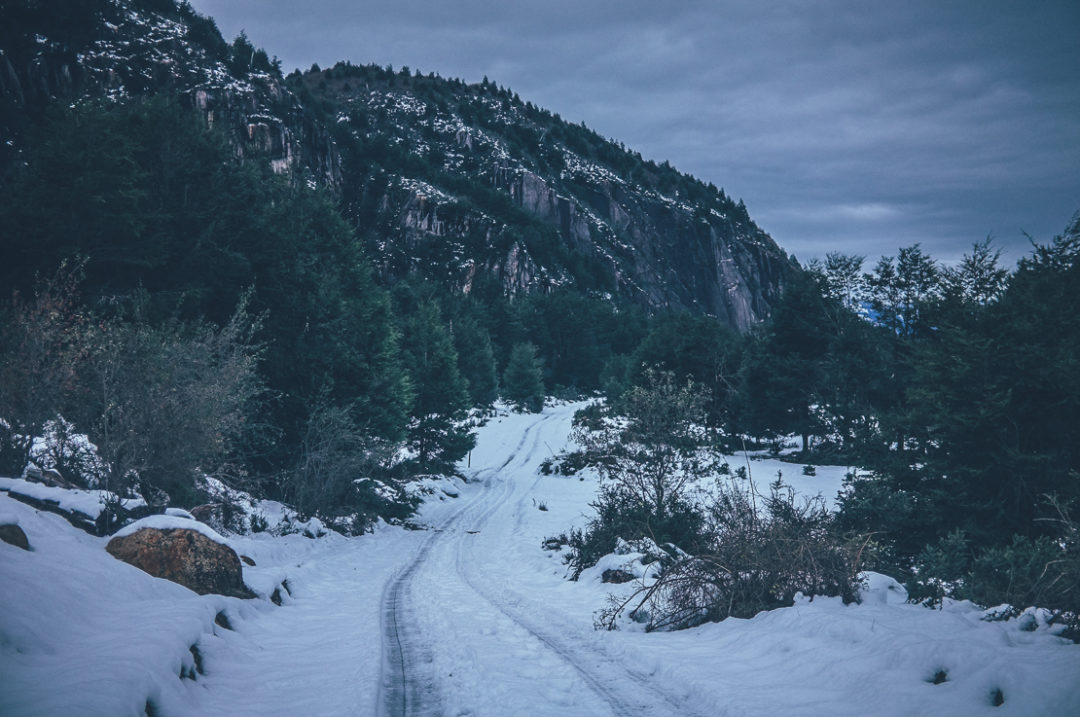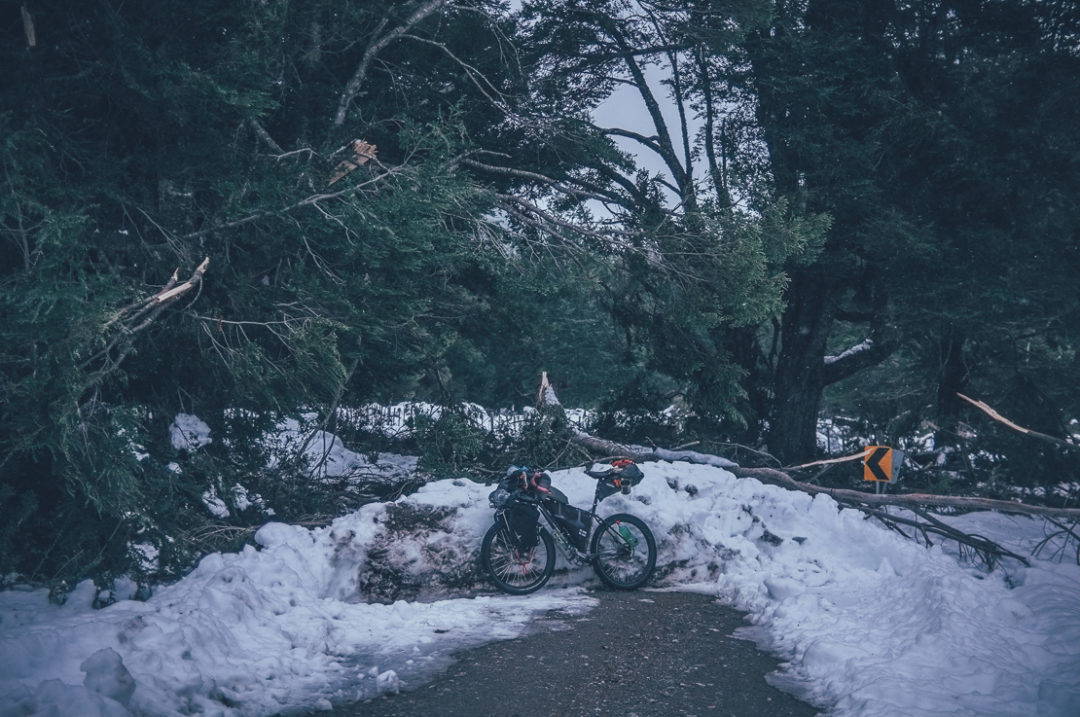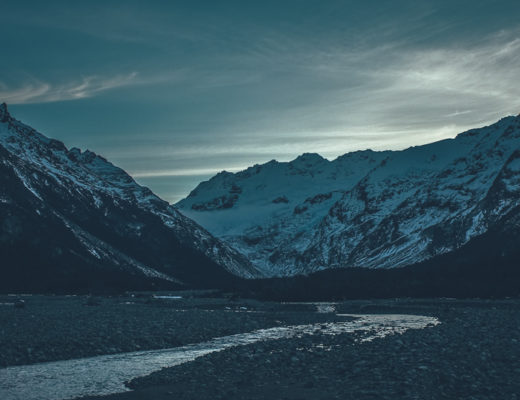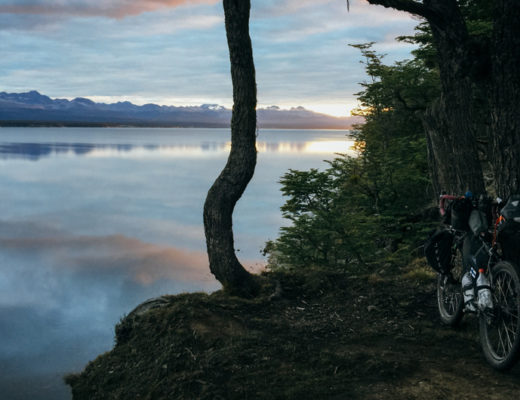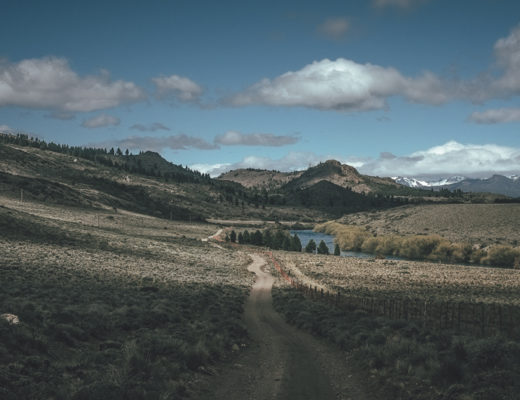I was only at 300 meters, but still the temperatures stayed well below freezing and the snow accumulated during a two day snow storm. My planned route went up and down from Chilean forests to arid Argentinian steppe over 1000 meter high mountains multiple times. An easy alternative would be simply staying on the famous Carretera Austral. But the last thing I wanted was to share a paved and extremely icy road with cars with no winter tires, driven by Chilean drivers. Up to the mountains I would go!
The following events occurred in June 2017 and it covers 345km in Chile from Coyhaique to Villa Amengual.
How much did I miss this.
After my odyssey in the National Park of Lago Jeinimeni I needed a break. During the past six weeks I had slept indoors just once, despite the sub-zero night time temperatures. During that time I had had just one hot shower as well, so I was really looking forward to reaching Coyhaique, the second big town on my route through the Chilean Patagonia. I was also ready for some company, some people to share my experiences with. Luckily, I had been in contact with Nicholas Gault (nicholasgault.com), another long haul gravel tourer, with whom I had been in contact since 2015. Now our paths were finally crossing.
The road from Puerto Ibañez to Coyhaique was, to my disappointment, perfect tarmac. This not only made riding boring but also made the road slippery above the snow line at 700 meters. Despite the ice I managed to stay on my bike on the occasionally steep switchbacks to the 1110m pass. At dusk, with a couple of hundred vertical meters left on the climb, I managed to grab hold of the side of a slowly overtaking timber truck. Excited for my first ‘truck surf’ in South America, I smiled widely behind my locomotive. After few minutes the driver noticed me and gave me a shout and thumbs up. The ice on the road increased toward the pass and I tried to avoid off-camber ice and kept my eyes glued to the two meters section of road between my front tire and the truck. At the top I let go of the truck and waved the driver thanks and goodbye, getting a response of two loud honks.
Snowy on a 1100m pass on the way to Coyhaique.
Snow covered the valley completely. It was cold enough that I was able to pitch the tent on dry snow. I had spotted a potential campsite earlier by a waterfall on my GPS map, but the monotonous landscape did not give a hint where the waterfall could be. By the lack of sound, I realised that the waterfall must be frozen. I pushed my bike in 30cm deep snow toward the location on my GPS. Eventually I reached a small, partially frozen river, which evidenced that I had found what I had been looking for. I tamped a more or less level area to pitch my tent on, collected stones to hold my tent pegs and pitched my portable winter cabin. I prepared my usual staple of pasta with olive oil and cheese, managed to read a half of page of a book and passed out. I have never had problems getting sleep after a day on the bike, and even less so in cold climates.
In the morning I woke up with the flysheet of my tent on my face. I am a huge fan of tarp tents, but there is an area where they do not perform well: snow loads. It had snowed 20-30cm overnight, so I started my day by clearing the snow off my tent to reclaim some living space. Getting water from the river, although it was just a few meters away, was also a project without having proper winter shoes, as the banks were soft gravel under knee deep snow. I was glad I had plenty of fresh clean snow to melt within arms reach for preparing my morning pasta and maté, and filling up my 1 liter Thermos for the day’s drinking water.
Camping by a frozen water fall on a 1100m pass near Coyhaique.
Once on the bike, I wondered what had possessed me to camp on top of the pass. My day would start with an 800m downhill. My muscles were cold and the dry winter air penetrated all my clothing. After a kilometre of freewheeling down the valley I stopped to layer up. I put on all the clothes I had easily accessible: thick neoprene overshoes, rain pants, one more merino wool balaclava, big winter mittens and a down parka under a rain jacket. On the way down fine icy snow flakes turned into bigger, heavier snowflakes. Most of the passing pick-ups, camionettas, stopped to ask if I needed a ride to town, thinking I was not enjoying myself.
The wintery scenery and riding on snow reminded me of home, in a good way. Back in Finland, I had over the years become fond of winter cycling. Snow made everything more fun and I didn’t mind the extra physical effort created by the soft riding surface. I loved riding my 26+ wheeled fixed gear mountain bike on the hard-packed snow trails of Helsinki central park; commute on the sea ice and escape to Lapland to ride a snowmobileand snow-shoe trails on friends’ fatbikes on winter holidays. Snow and cold also created a greater sense of adventure. I had to take care of myself, physically and mentally, better than during a warmer season. I could not stop to have a long rest, or delay having a bite to eat: it was all about staying warm (but avoiding sweating!) and getting a sufficient amount of food and drink into my system. I liked it.
My budget does not generally allow me to pay for sleeping, but staying in a guest house seemed to be the only comfortable way to to meet Nick. When I reached the guesthouse I did not only find a smiling Englishman, but a happy Turk, Gürkan Genc (gurkangenc.com) as well! I found out that they had also been in contact and decided to meet up in Coyhaique. Gürkan had arrived just a couple of hours before me and there we were, three long distance workhorses chatting in a small hospedaje room in disbelief of meeting other people like us. Nick had started his trip in 2012 from Alaska and found his way down south over the years on back roads, trying to avoid paved surfaces. Gürkan had started his trip also in 2012 and was not on his first his first lap around the world anymore. He is the first Turkish person to have cycled around the world. With his friendly and communicative personality, he has gained something of a celebrity status in his country, and has a section of a national museum dedicated to his adventures.
Three long distance rigs and two of their riders enjoying the sun in Coyhaique, Chile. Two days before the valley got covered with 40cm of snow. Photos by Nicholas Gault.
For three days in the guest house, we shared stories from the road and from home. Then Nick and Gürkan continued south together, and I moved to a Warmshowers host to have a couple more days of rest and to do some writing. Diego and Shayen welcomed me warmly to their home and I had a place to sleep in a cabaña shared with their friend Leo. I had planned to stay three nights, but heavy snowfall made me stay a week. We were only at 300 meters, but still the temperatures stayed well below freezing and the snow accumulated. My planned route went up and down from Chilean forests to arid Argentinian steppe over 1000 meter high mountains multiple times. An easy alternative would be simply staying on the famous, but here mostly paved and busy, Carretera Austral. But the last thing I wanted was to share a paved and extremely icy road with cars with no winter tires, driven by Chilean drivers. Up to the mountains I would go!
The views to the Cerro Mackay from my cabaña of my friendly Warmshowers hosts in Coyhaique.
Gear-wise I was ok to face the upcoming months of ice and snow, except in footwear. As I did not expect daytime temperatures below -10C, I had hoped to keep using my summer cycling shoes with thick neoprene overshoes, as long as my feet would be completely dry. When wet though, I would be in trouble. Cycling the winter of Europe 2014-15 at the beginning of my trip, I had proper winter cycling shoes, but they had been sent home already two years earlier. I would need to find a solution locally. Luckily my host found an old pair of think neoprene socks from their warehouse, which just about fitted into my cycling shoes. I had tried riding with neoprene socks before, and had hated it, but it was the best solution available. As I was likely to be camping on snow for weeks, if not months, my sandals were not ideal camp shoes anymore either. With some luck I found size 47 winter boots for equivalent of 15 euros, exactly the type I had been looking for: big, warm and light. I strapped the boots to my rack, under my micro panniers in old leaky dry bags.
My sandals as camp shoes were replaced by big, but lightweight winter boots I found cheaply from Coyhaique. The footprints in the picture by a puma. I carried my new winter proof camp shoes under my micro panniers strapped on the lower part of the rack with bungee chords.
When the day of departure came, I was a little nervous, but very excited. I was carrying a lot of food, as I did not know how slow I would be. Some of my planned routes could be closed because of snow as well, so the time of reaching the next village was unknown. My route started with a 600m climb toward the border on a snowy road, which was occasionally too steep and slippery to ride. If there had been only 30-40cm of snow in Coyhaique, there was more than half a meter at 800 meters. Clearing a spot for tent would take some time without a shovel. Moreover, finding a way into the snow over the one meter high fence felt like a daunting task. Maybe I should have planned out my place to camp a little better?
Not finding a spot to get across the fence to the woods to camp, I ended up reaching the Chilean border station. I was not planning to cross to Argentina from here, but turn north to a smaller road. The road I was supposed to take was uncleared of snow though. My options were to start pushing my bike in knee deep snow to potentially nowhere, or ask at the border station of Carabinieris for a place to camp. A young man looked at me in confusion and repeated a couple of times ‘acampar? acampar?’, before taking his walkie talkie and talking to somebody in rocket-speed Spanish. Soon I was directed into the main building of the border crossing and was welcomed by border officials. They brought me a big mattress and a pile of blankets and told me that I could sleep in the customs waiting hall. Fine by me! I talked the evening with an officer of Chilean Internal Investigations about differences of the flora and fauna of Finland and Patagonia. We exchanged Facebook before contacts I headed to sleep. Border crossing would open early.
Hospitality at the Chilean border control of Paso Coyaique Alto.
In the morning, I packed my stuff before the border crossing opened, though for nothing. There were no people or cars attempting to cross after the recent snowfalls. My plan had been to stay on the Chilean side, but the road I had been planning to take was not only unridable because of snow, but it would also cross a deep, partially ice-covered river. The morning temperature at the border station was -16 degrees Celsius, so wading across a potentially chest deep river would be a little irresponsible. I spent the coldest hours of the morning researching alternative routes and enjoying the coffee and cookies the border officials kept feeding me.
As I hate backtracking, it was eventually an easy decision. I would continue to snow-covered Argentine steppe and head north on that side. Usually there is less precipitation in Argentina than in the mountains of Chile, so small roads could be more rideable than currently in Chile. There would be still snow for sure, so I would not need to worry about water, which is usually the challenge on the remote routes in Argentinian Patagonia. I could melt all the water I needed for cooking and drinking from snow. I had been prepared for this and instead of carrying my usual 750ml of fuel, I had filled one of my unusable (uninsulated!) water bottles with an extra 1000ml of petrol, bringing my total volume of fuel to 1750ml. At 11am a 4×4 arrived at the border station from Argentina, telling me that the road across the no-mans land would be doable. With no more excuses to enjoy the warmth of the fireplace any longer, I got my passport stamped out from Chile and got on my bike. A border official took a picture of me outside, before I started pedalling into the white scenery. The road to Argentina had been cleared a couple of days earlier and the bottom was hard-packed snow topped with light, wind-blown snow dunes. I could mostly stay on the bike, only occasionally needing to push through deeper sections. The scenery reminded me of home.
At the border station of Paso Coyhaique Alto, ready to head into the white scenery and into Argentina.
Wintery scenery near the border crossing of Paso Coyaique Alto.
After the Argentinian border control I was on well-used road again, which I greatly enjoyed riding with light tailwind. The bike was completely silent on snow and progress was fast on the gentle decline. After 50km I reached the village of Doctor Ricardo Rohas, where local kids showed me a little restaurant to buy empanadas. I tried tell them that they were not properly equipped for the -5C temperature in the village, but they just smiled and said they were not cold. Not yet, I thought. After empanadas one of the kids invited me to drink maté in his house and who was I to say no! His parents were slightly surprised that their kid had brought a funny looking gringo into their house, but warmly showed me a place to sit by a fire and offered me maté and tortas fritas, a common Argentinian delicacy of deep-fried bread. I gave the kid my ’trip card’ with my website address and a picture of my planned route, filled my 1 litre Thermos with hot water and got back on the bike.
The kids of Doctor Ricardo Rojas were my travel guides in their snowy home village.
The snow steadily decreased during the 60km ride inland from the border. By evening, the gravel surface of the road was partly exposed again. During a beautiful long sunset, I coasted on a tailwind down the valley, until I saw some trees 50m away from the road to camp behind.
Sunset in the snowy Argentinian steppe dir a campsite in the snow.
My original plan for the previous night’s camp spot had been the usual one: camp by a river. Even though I was carrying plenty of fuel, I tried to be a little fuel conscious. I would have saved some fuel by getting the water I needed from the river, instead of melting it from snow. When I reached the river a few kilometers away later next morning, I was glad that I had decided to camp earlier. The river was fully covered by ice, which would have made getting water challenging.
Road RP38 had no traffic at all.
The theme of the day was straightforward: turn left at the first crossroads and keep riding north till sunset. And that’s what I did. A straight road did not offer very interesting riding, but the open snowy scenery was magical. Once the shadows started to get longer at 4pm, I had still plenty of energy to keep riding, but the rapidly dropping temperature was in favour of finding a spot to camp at dusk and snugging into my sleeping bag. Additionally, I had started to watch Stranger Things on my phone on Netflix the night before and I was curious to see how 011 was doing.
Netflix in the sleeping bag? I had swapped my Shimano XT front hub to a dynamo hub for the Americas and was now able to keep my phone charged up. Therefore I was able to watch pre-downloaded series and movies on my phone multiple hours a day, if I felt like it. Movies and books have gained more and more significance on my trip, especially during the dull sections on my way. They give me a break from the routines of riding, eating and camping and take my mind to somewhere else for a while. Occasionally they also offer something to look forward to in the evening in my campamento. After a day on a straight road riding in to headwind, this was one of those nights.
In the winter, I always feel that I have a limited amount of time to find a place to camp. The combination of dropping body temperature (for slowing down to look for a spot), rapidly dropping outside temperature (sun setting) and hunger is the recipe to get cold despite good gear. I need to get food into my system to warm up.
The empty scenery did not make any spot to camp better than another, until I saw a small hut far away from the road. If I could not get in, it would at least offer some wind protection for the night. I pushed my bike in the snow to the small cabin, which turned out to be storage for horse food. Behind it was a clearing just big enough for my tent. Using the biggest rock I could find, which was not very big at all, I managed to hit the tent pegs into the frozen ground. Using my pot and mug I gathered snow into a big pile in front of my tent and crawled into my tent. I did not plan on leaving the comfort of my sleeping bag for 15 hours, unless I absolutely had to. I could cook, sleep, eat, watch movies and even pee in the comfort of my insulated ‘full-body condom’. Except for a well-hopped beer and the company of a beautiful Argentinian woman, I had everything I could ever need.
Camping behind a horse food storage along the RP38.
During the nighta gale force wind brought hail. I was glad that I had got the pegs deep into the icy soil. The strong wind continued into the morning and soon it started to snow again. First, thin, fine snowflakes like tiny pieces of ice; then bigger hail-like crystals and heavier snowflakes. Visibility was down to a couple of meters. Luckily, my road continued dead straight and during the past 24 hours I had seen just one car. No need for better visibility anyway. I put on my sunglasses to protect my eyes from the snow and pedalled on into the white wall of the empty road.
My vague plan had been to keep going north and cross back to Chile at Paso Rio Frica. After a couple of hours on the bike I came to a sign saying ‘Int. Paso Pampa Alta’. There were no international border crossings marked on my map in the direction of the sign, but there was a road going to Chile and back to my original planned route. Why not to give it a try? Car tracks showed that there was some traffic in this direction, which gave me confidence that I was not riding to a dead end. Soon I saw two lights rapidly approaching me. I had just enough time to pull aside before a big new camionetta flew past me at high speed. Someone knew the road (and traffic!) well in the low visibility. I learned my lesson and put on my lights to warn other upcoming rally drivers of a danger ahead (me!). A second car soon appeared from the white wall and stopped beside me to notify me that there was ‘mucho nieve’ ahead. He said he had barely made it through with his 4×4 truck. Sounds good to me, I told him and waved him goodbye. Too late to turn back for someone who hates turning back. If there was a border control, these car tire tracks would lead me there.
Close to whiteout on the way to the border crossing of Paso Pampa Alta.
At sunset it stopped snowing, but still the road grew snowier. Chile was approaching. If I had had any narrower tires, the road would have been slippery and progress slow. As it was, my tires just about stayed on partly soft snow and riding on tire tracks was fun.
At dusk I spotted some trees 100m away from the road (the first for two days!) and pushed my bike to them. I was 10km from the border and my camp was visible from the road, so no wonder that an hour later when I was cooking in the comfort of my down jacket and sleeping bag, a passing car stopped and two lights started to approach my camp. Making a good winter camp takes some time and effort and I was hungry and thirsty after a day on the bike. The last thing I wanted was to move my camp. I greeted the two officers of the Gendarmeria and was immediately notified that I would not be allowed to sleep here. I would have to join them. I explained that striking the camp would take a very long time and I only wanted to sleep the night here and meet them in the morning at the border station. No. Silently swearing in Finnish, I started to pack my stuff. Once at their car, I was told that not only would I not be allowed to sleep here, but I would not be allowed to ride my bike to the border station 10km away either. I tried to explain that I wanted to ride every kilometre on my trip if possible, but I got no sympathy. I lifted my bike onto the back of the their green and white pick-up and climbed into the backseat of the warm car.
Dusk the border crossing of Paso Pampa Alta.
Once at the border station, I was shown a comfy mattress next to a fireplace and politely asked if I liked pizza. I was also given the choice between beer or wine. Still a bit annoyed at their visit to my campsite, it took a moment to process what I had heard and produce a response. “Si, me gusta pizza, y un cerveza por favor.”
No one had crossed the border for a week and they were happy to have a new face in the house. I was informed, though, that I could not cross the border because it was ‘dangerous’, despite the fact that there was a 1500m straight road to the official geographical border. I would need to wait for a pick-up and hitchhike the ‘dangerous’ section to the border. A couple of hours later, when they learned where I have been and where I was from (la paisa de nieve) they decided that maybe they could let me ride the remaining 1500 meters to the Chilean border. I assured them that if I get lost on my way to Chile, I could request an evacuation with my Personal Locator Beacon. They seemed satisfied. After a day on the bike in snow, multiple massive slices of pizza and four beers, I hit the sack next to a red hot fireplace, were my bed had been made. The border officials had been nice enough to warm up the room the whole evening to make sure I would not get cold at night. Sweating like in a sauna, I did not get much sleep.
Argentinian Gendarmeria treated me with a hot shower, pizza and interestingly, Chilean beer. I did not complain.
In the morning it was all official again and all the beer cans had been tidied away. I was stamped out of Argentina and escorted to the beginning of the Argentinian version of the famous Bolivian Death Road. The 1500m straight road had 5cm, occasionally 10cm of snow on it. I was confident that I could do it. Half way there my confidence for my own abilities started to waver, though. I did not know if it would be better to ride on theleft or right hand side of the road. Still I kept going. 5 minutes later, I finally reached the end of the ‘danger zone’, tired but happy. This was a small day for a bike traveller, but a big day for Chile. A Finn coming over!
Argentinian version of the famous Bolivian Death Road. 1500 meters of living on the edge.
In customarily cool Chilean manner the Carabinieris of the border station stamped my passport and wished me happy travels. I was the first person to cross there for a full week, but they acted like there was a line of tourists impatiently waiting to get their passports stamped. Unlike on the Argentinian side, Chilean roads were neatly cleaned of snow, which made 30km downhill to the village of Ñirehuao relatively fast.
On Chilean side of the Paso Pampa Alta the road was recently cleared of snow so riding was easy despite the increasing amount of snow.
Despite the empanadas being slightly out of my budget (1 Euro each, plenty needed for a satisfying meal), I purchased a small bag of them once I reached the village. These hot, greasy, meaty pastries tasted wonderful in the mouth of a pre-tour vegetarian. Daytime temperatures made for tricky bike riding: sunny afternoons often pushed the temperatures above the freezing point, which softened the snowy roads. I would have much preferred to ride in temperatures 5 celsius degrees colder, which would have kept the roads in better condition for winter cycling. The soft, slippery surface forced me to reroute and skip a steep 600m climb and stay on the road in the valley. On the bottom of the valley was significantly more snow than there had been on the pass, often more than 50cm. The road was neatly fenced on both sides, which did not make finding a camp site any easier. Many organised campsites along the road by the Rio Ñireguao indicated that I was not the first tourist on this road. My budget could not really let me pay for sleeping though, so I kept riding into the night until I found an open gate and the footprints of a cow leading to a snowy meadow. I dragged and carried my bike in snow, until I was far enough not to be seen from the road by rare passing cars. There was no level spot around, so I made a level platform for my tentand cooking area from snow. The luxuries of winter camping!
A snowy campsite on the way to Mañihuales.
I slept nearly 12 hours and then enjoyed the warm midday sun in my camp, till clouds covered the sky again. My two-hour holiday was over, it was time to get back on the road. Temperatures had risen and the road was partly muddy. The winding road climbed up and down on the valley wall, occasionally going down to the river in the bottom of the valley only to climb up 150m again soon after. 20km took me nearly three hours , including a quick stop to fool some trout. With my late departure, I reached the village of Mañihuales in dark.
Road to Mañihuales from Ñireguao was beautiful, but soft and muddy.
I stocked up on food and petrol and found my way to a small bakery. whichwas supposed to have the cheapest empanadas in town. I never found out if that was true or not, as soon after entering I was taken to a back room where the panadaro and his friends were having a birthday party. It was not clear whose birthday they were celebrating, but they were excited to see me and wanted me to drink vino tinto with them. Simultaneously I was brought a plate of empanadas de pino, beef pies. If my Spanish was a little broken, so was theirs. Three old men chatting away drunkenly with south Chilean slang is not a school book learning experience. They offered me a place to sleep in the room where their birthday mayhem was going on, but for some reason I decided against it. I was brought a huge plastic bag of empanadas after I thanked them for the party and had a final glass of red wine. There must have been nearly two kilograms of food in the bag. I was a happy cyclist.
A birthday party in the backroom of a bakery in Manihuales.
Finding a place to camp was a little harder in the dark than I had anticipated. I was on the famous Carretera Austral now, and the roadside was littered with houses and cabañas. Finally I found a place to camp by Rio Mañihuales after more than an hour of searching in the dark. Once I had pitched my tent, I stuffed two giant empanadas into my mouth and passed out in my goose-down nest.
In the morning the river was inviting me to fish, but perhaps the coldest morning yet for me in South America made me prioritize. Eat, warm up drinking water for the day, strike the camp, ride the bike. I had only 50km planned for the day, but the daylight hours were short. There was daylight only from 9am to 5pm, which did not give much time on the bike per day unless I was willing to wake up way before sunrise (which I did not even consider). The reward for the day’s kilometers was Villa Amengual, where I had planned to relax a couple of days in a refugio para ciclistas, the first of the cheap or free touring cyclists-only accommodation on my way. Based on my map, I would have 20km of interesting riding on small gravel roads and then 30km of dangerous and occasionally busy Carretera Austral.
A small gravel road followed the gorgeous Rio Mañihuales and progress was easy. Until it wasn’t. Just six kilometers before the big, paved road I found myself riding into the woods on a forestry machinery trail, which soon left the road I was suppose to take. Again, too late for me to turn back, I chose to keep pushing my bike along the uncleared road in snow. What I failed to foresee was that there was a reason why the road had not been cleared of snow: there were hundreds of big branches on the road broken by heavy snow loads from recent snowfall. I spent the following two hours dragging and carrying my bike through three kilometres of forest until I reached the big road again. I reached the Refugio Para Cyclistas de Villa Amengual in the beginnings of another snowstorm, which eventually lasted two days. I could not have timed my arrival better to that cyclists’ haven.
There was a reason why this road was closed. Heavy recent snowfall had broken hundreds of big branches on the road I had planned, and was about to take.
During the following days I watched from the window the snow getting deeper and deeper and the amount of cars on Carretera Austral slowly dropping to zero. There was nothing I could gain by getting back on the bike, so I stayed put and ate well, repaired most of my clothing with my host’s sewing machine, read and watched movies. The upcoming section of my route would be potentially much harder than the previous one, so some rest did no harm either.
The Route
The route I took is definitely not the shortest way from Coyhaique to Villa Amengual, but it could be the most interesting one. The loop to Argentina highlights the differences of Chilean and Argentine nature. The green and lush mountains of Chile with small glaciers and sharp, snowy peaks turn into arid steppe just within a distance of a 20 kilometers. The road surface was extremely poor on the road RP38 in Argentina. The backroads on the Chilean side were soft and muddy in winter, when not frozen and covered by snow. Overall there are no sections you could not do with 2” tires and plenty of patience, but bigger tires are definitely comfier and likely faster too.

